fall inside a hole
Plarail Hikari with Light
First written September 6, 2023The Hikari is the high-speed express train running on the Tokaido Shinkansen line. 0-series Shinkansen trains ran the Hikari (as well as the slower Kodama train) from their introduction on October 1st, 1964 through the introduction of 100-series Shinkansen to Hikari service on October 1st, 1985 and until 2000 on the West Hikari run on the Sanyo Shinkansen line, with some temporary Hikari 0-series trains running until December 2008. Before the introduction of any of the other series of Shinkansen the 0 series was called a few different names including the Hikari.
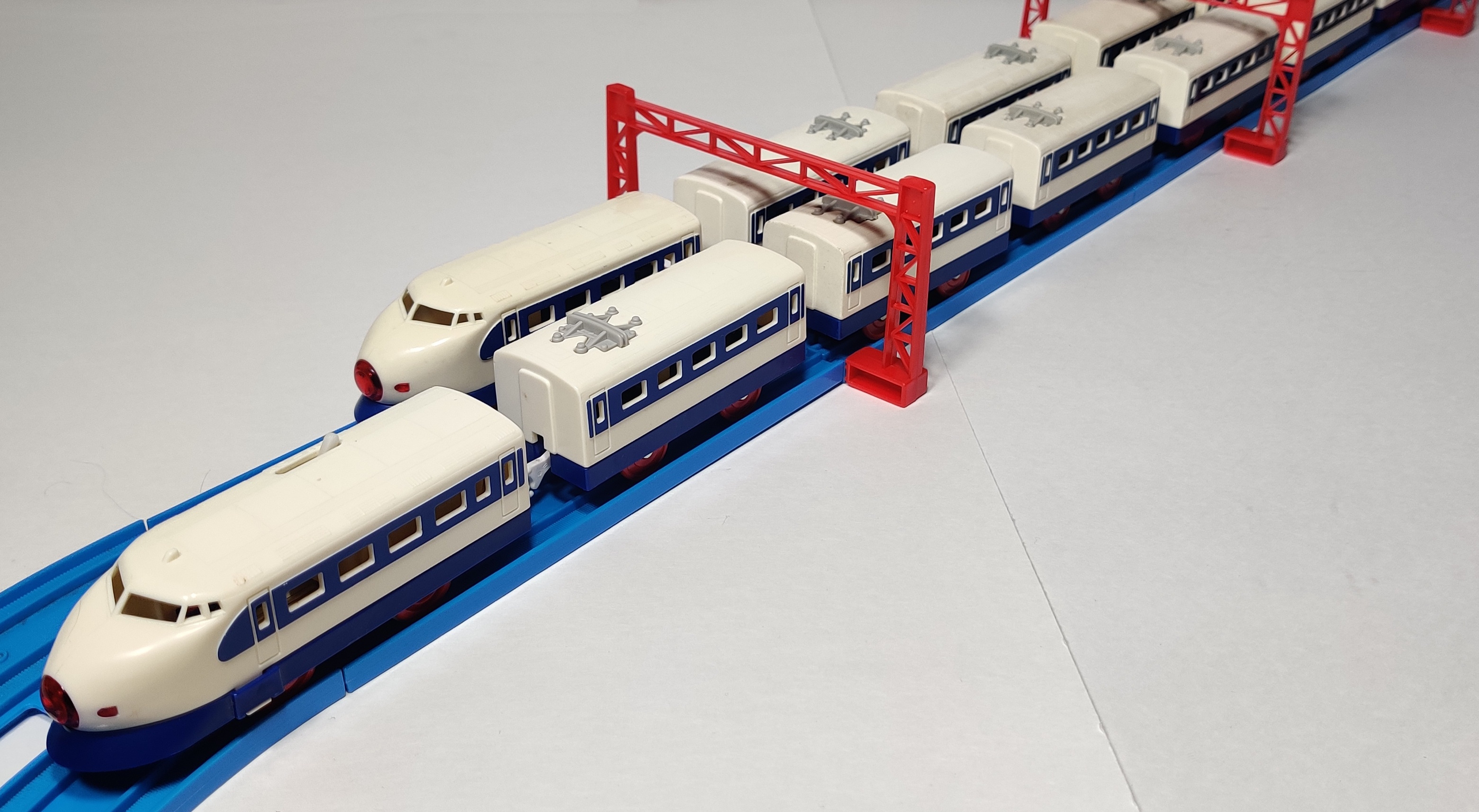
Plarail first introduced both a powered and unpowered Shinkansen train in 1964, evolving their Super Electric Express Hikari from its early red and white incarnations into the later 1970s New Hikari which served as the basis for 1979's Hikari with Light, the first Plarail train with a light feature.
EC-09 Hikari with Light (1979)
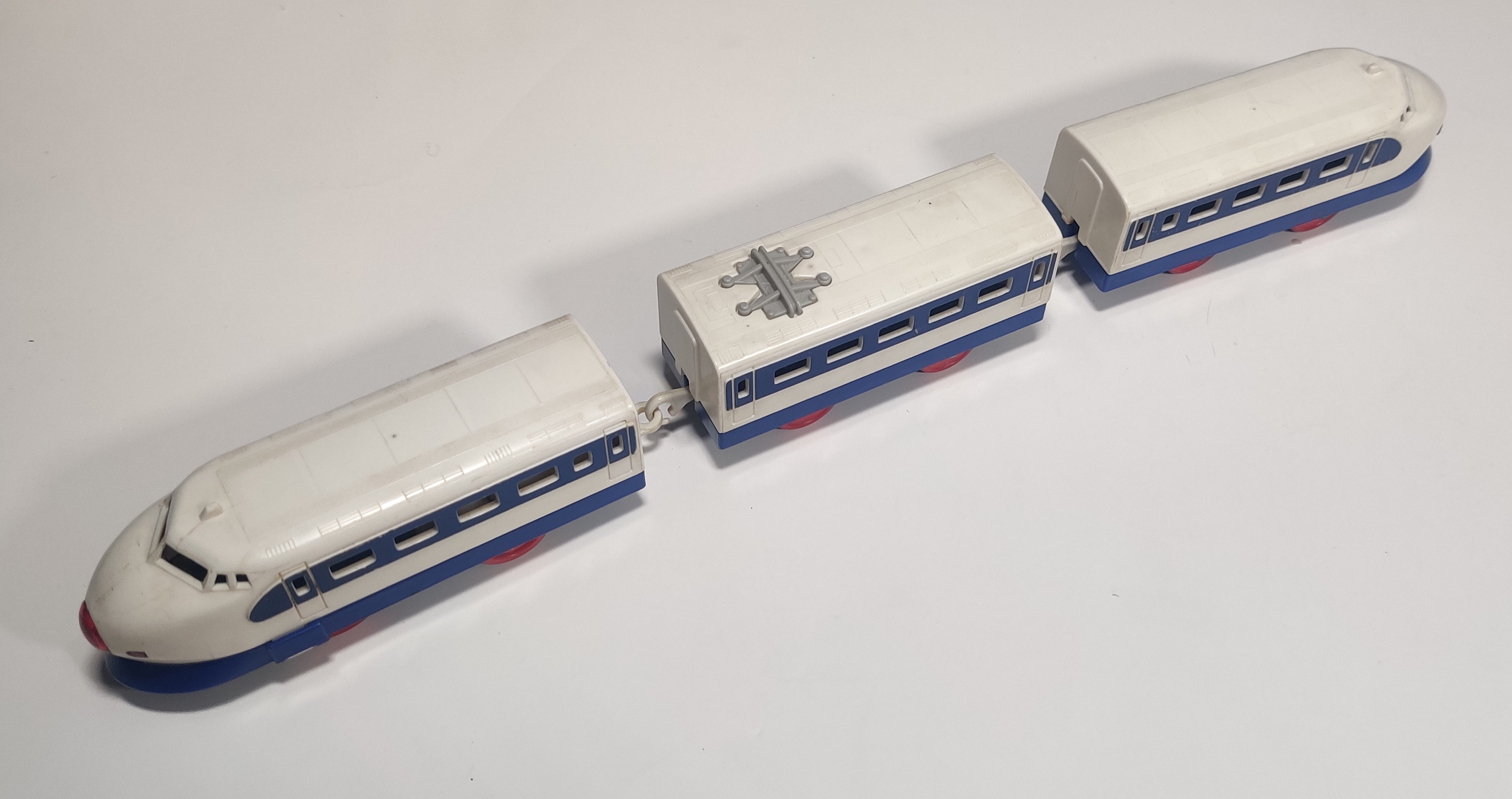
The original Hikari with Light (ライト付ひかり号) was released in 1979 with an old-power plastic gearbox with an incandescent light in the nose of the body shell which shines through the translucent plastic nose and was sprung against contacts in the chassis. The Hikari with Light was first released in a fifth generation "EC" box as EC-09 Hikari with Light. A boxed example of this release can be found in the Plarail Museum.
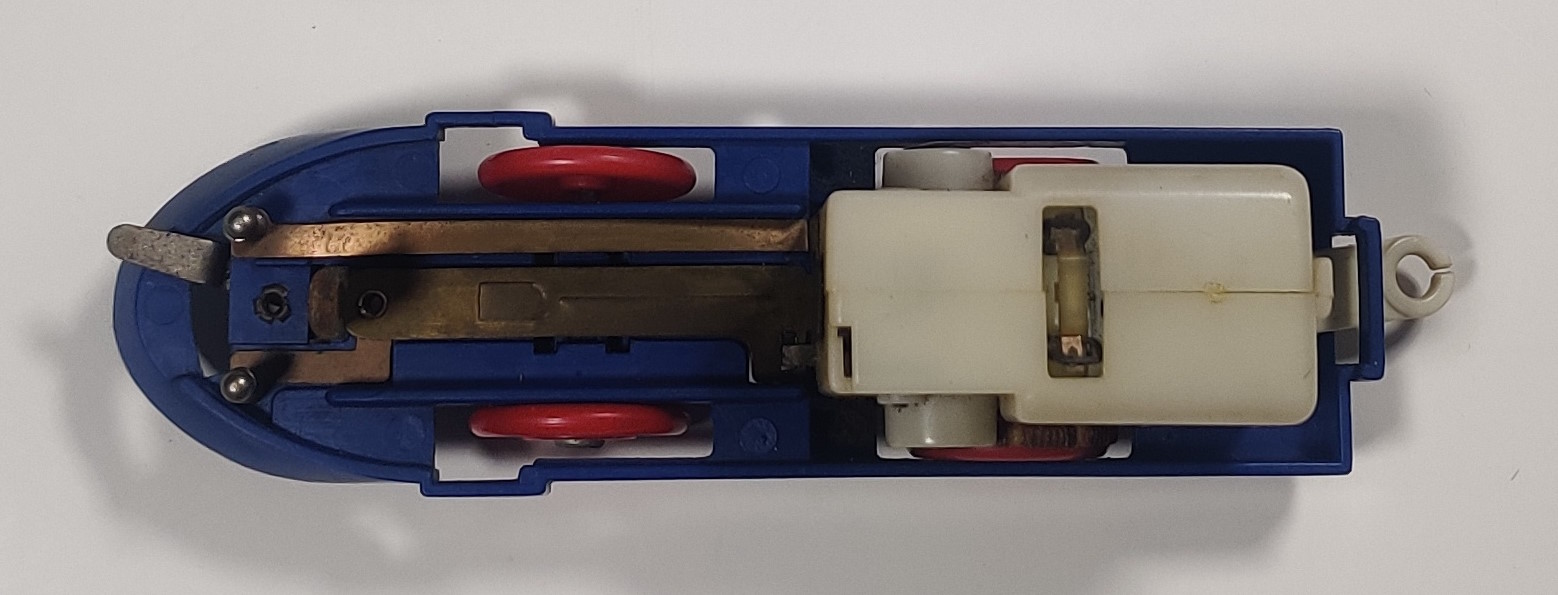
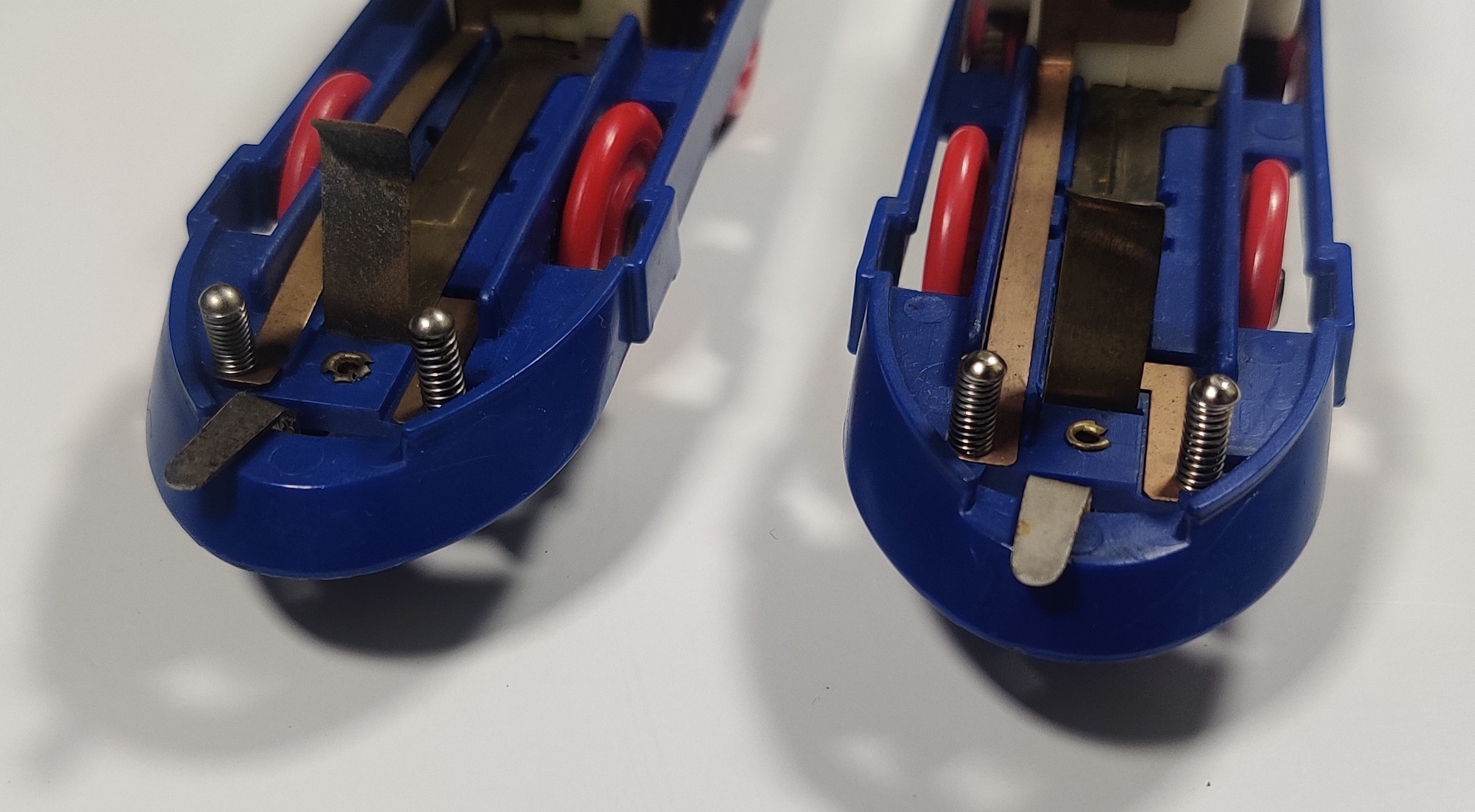
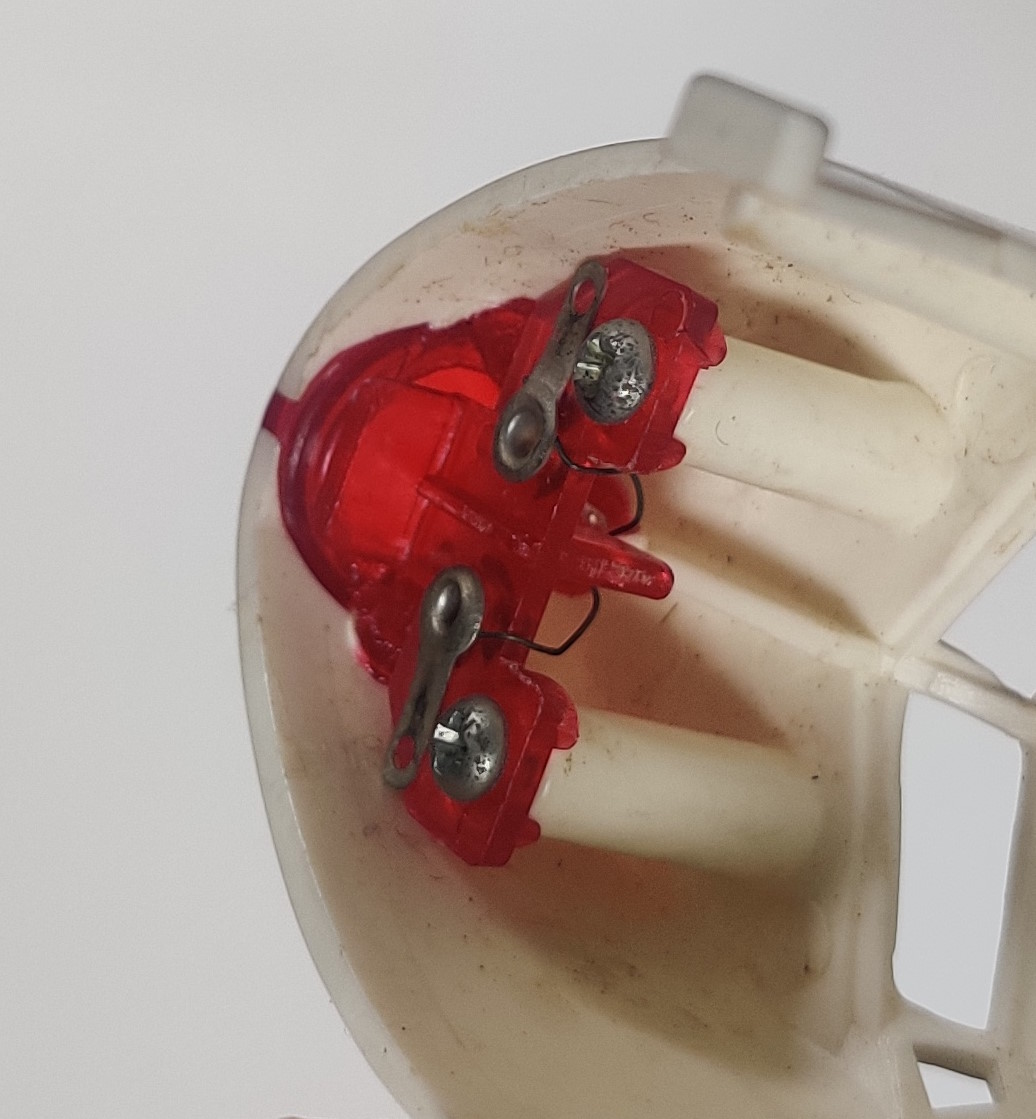
The chassis has an additional metal contact that is wedged behind the normal positive battery contact sticking out of the front of the plastic rim-drive motor. This strip, as well as another smaller one attached to the normal negative contact strip downstream of the power switch, connect to two spring-loaded contacts at the front of the chassis. Two small eyelet fittings in the red translucent nosepiece of the body shell press down against the pins to power the small bulb housed inside.
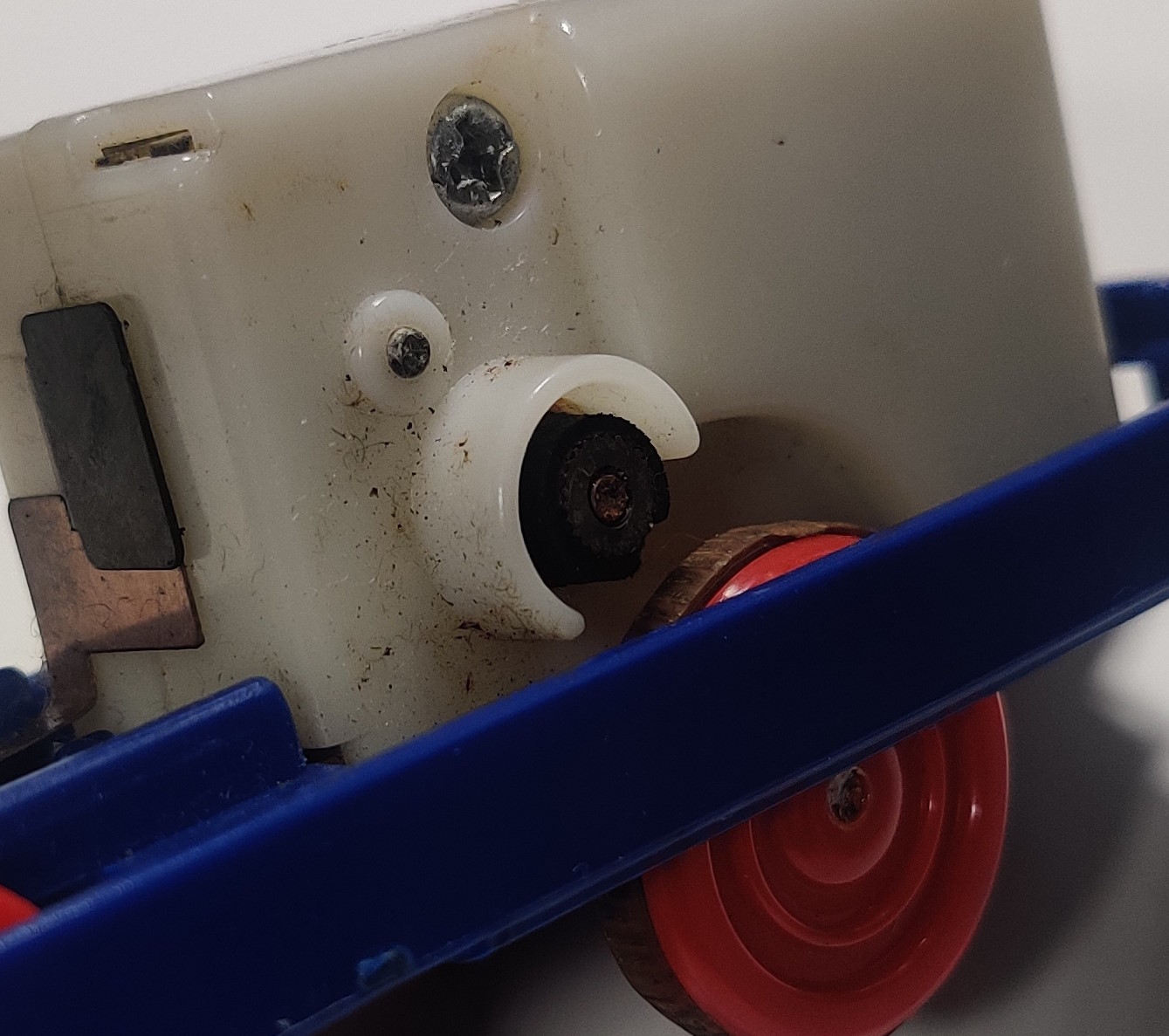
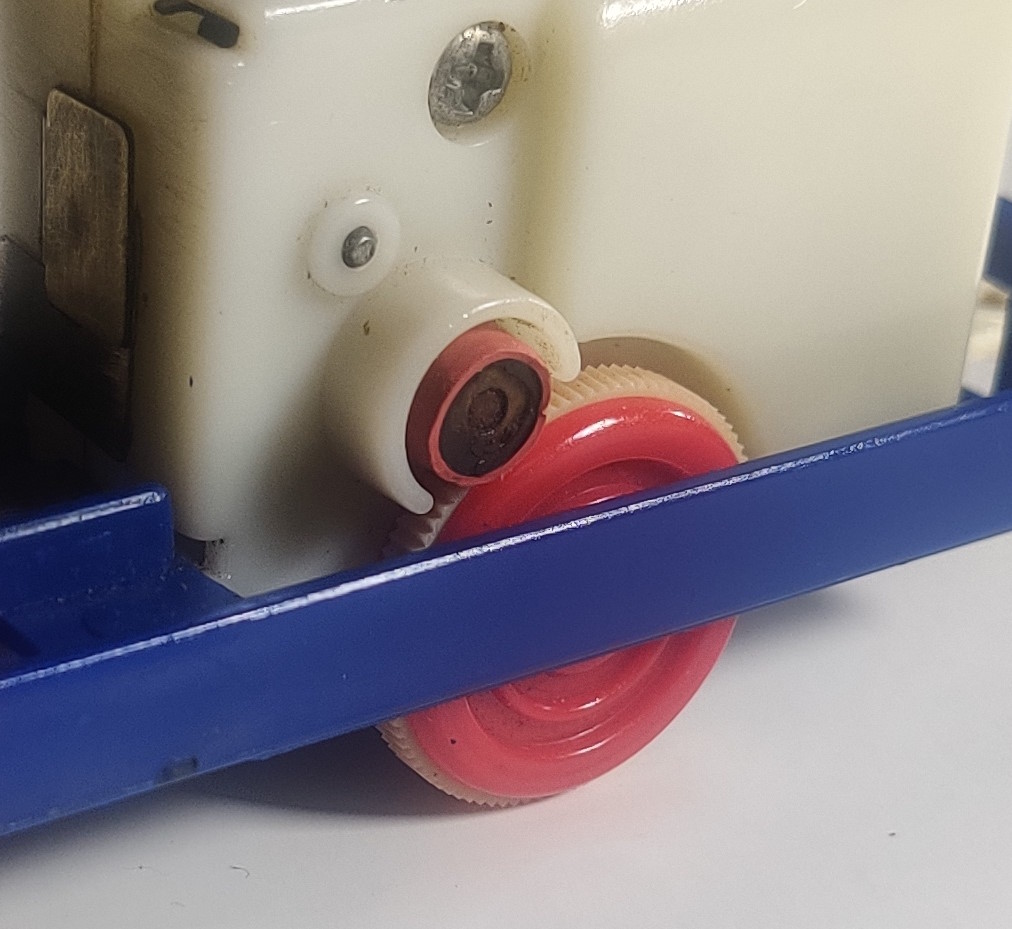
I have two early Hikari with Lights, both from copies of the 1979 Basic No.2 Set Hikari with Light, although one is missing its original tail car. Both had dry-rotted traction tires and rim-drive tires. I replaced the wheel tires with new ones and decided to cover the original rim-drive tires with heat-shrink tubing as described here but may change them to using shaved-down rubber grommets in the future as the original tires were pitted and ride rough.

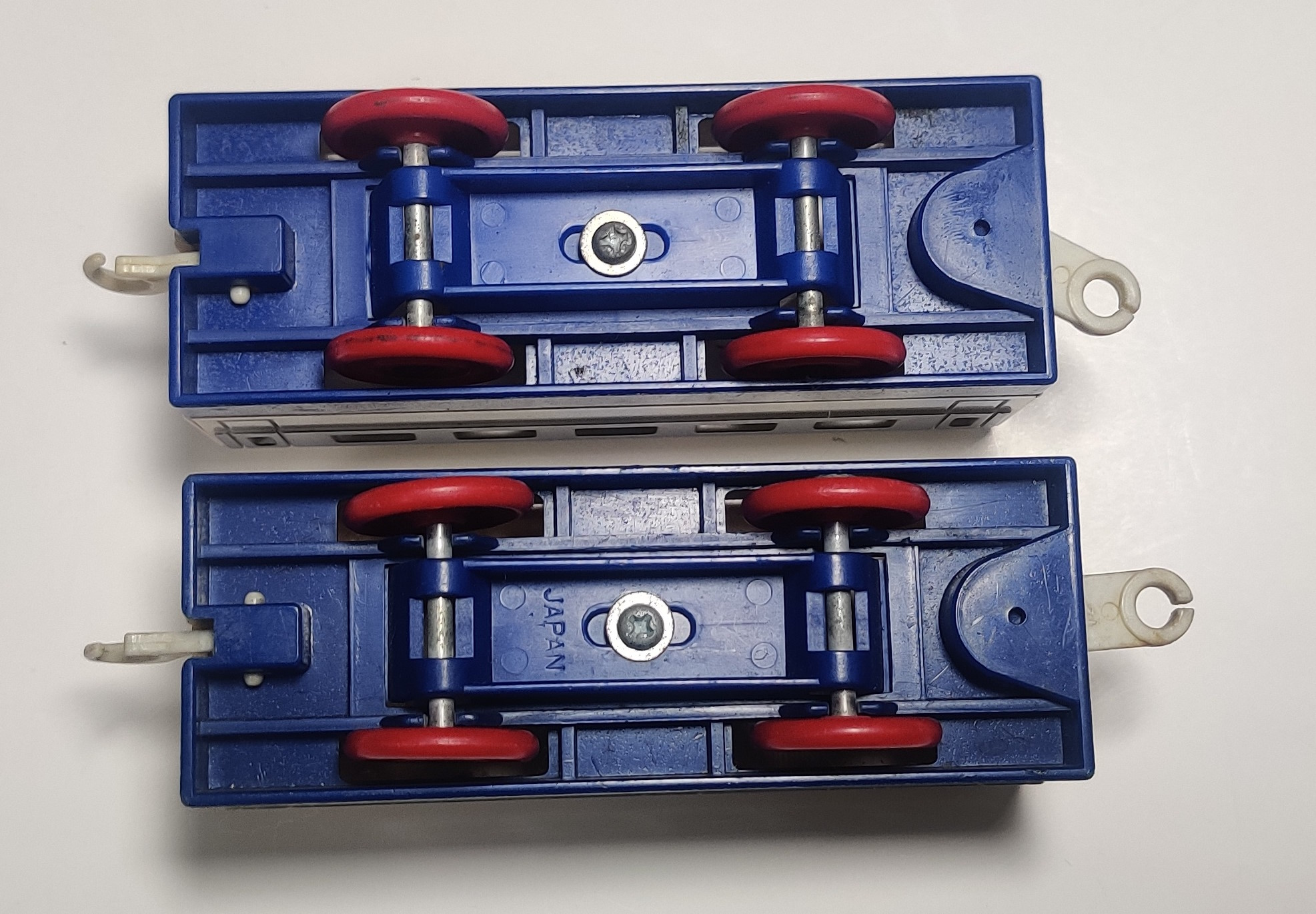
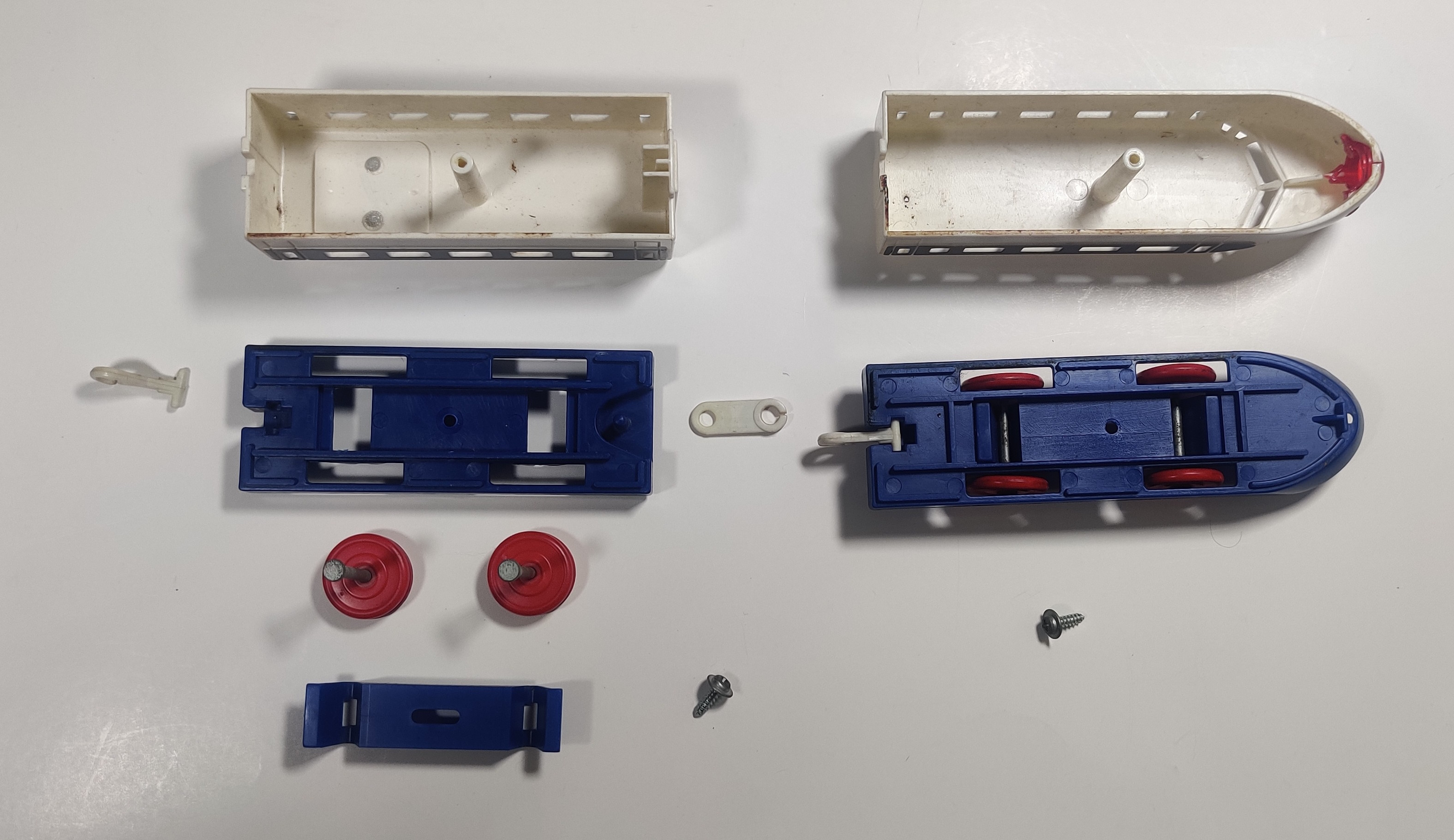
Early release Hikari with Lights lacked the "JAPAN" marking on the wheel clip but are otherwise assembled very similarly to all later 0 series cars. This molding of course predates the mid-80s remote control 0-series molding which later 0-series train toolings were derived from. Previous late 1970s non-lit Hikaris did have a Japan mark on the chassis but it was located between the rear coupler and wheel holder and was covered by the new chassis insert system.
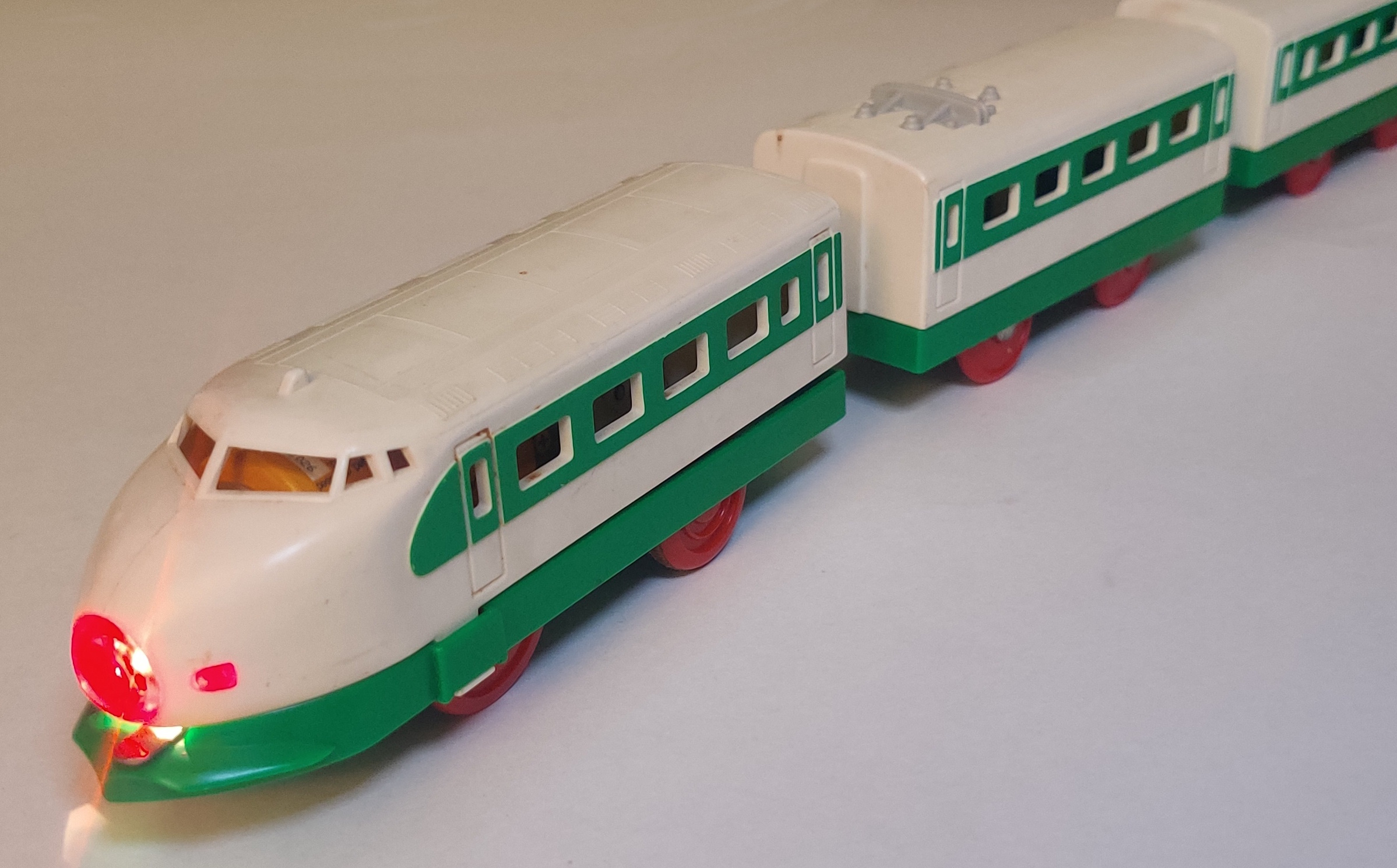
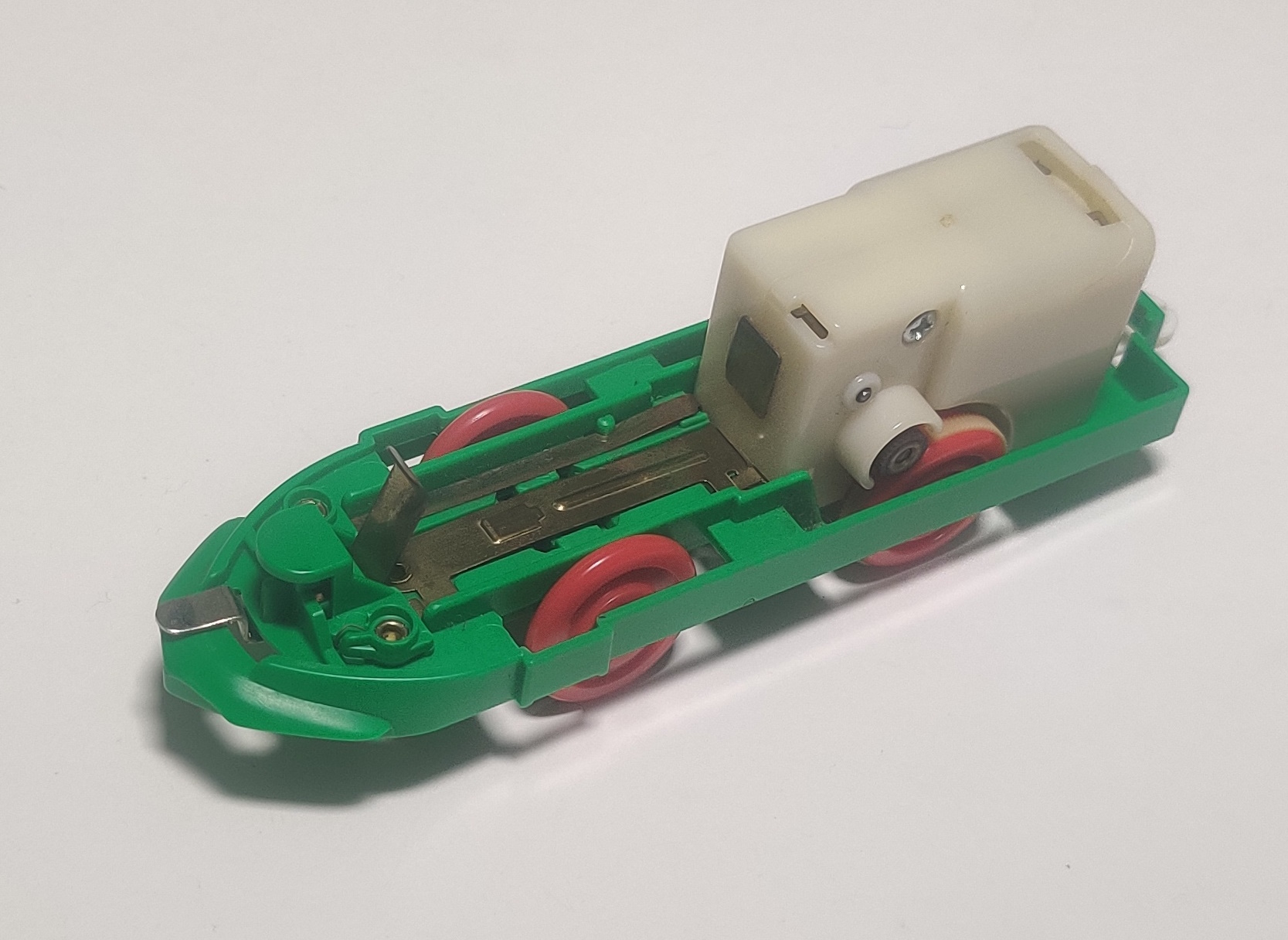
The original Hikari with Light would eventually become the basis for the Tohoku Joetsu Shinkansen with Light, which used a simpler design with the bulb mounted between the chassis and a new molded carrier piece that is riveted to the chassis and holds the bulb and power contacts in place. This meant there was no longer the two sprung electrical connections nor the larger bulb-encapsulation in the nose cone of the body shell. In the mid 1980s the Hikari with Light transitioned over to using a chassis-mounted bulb like the 200 series, as it was clearly a simpler, cheaper, and probably more serviceable and less fragile design.
EC-09 Hikari with Light (redesigned bulb placement) (~1983)
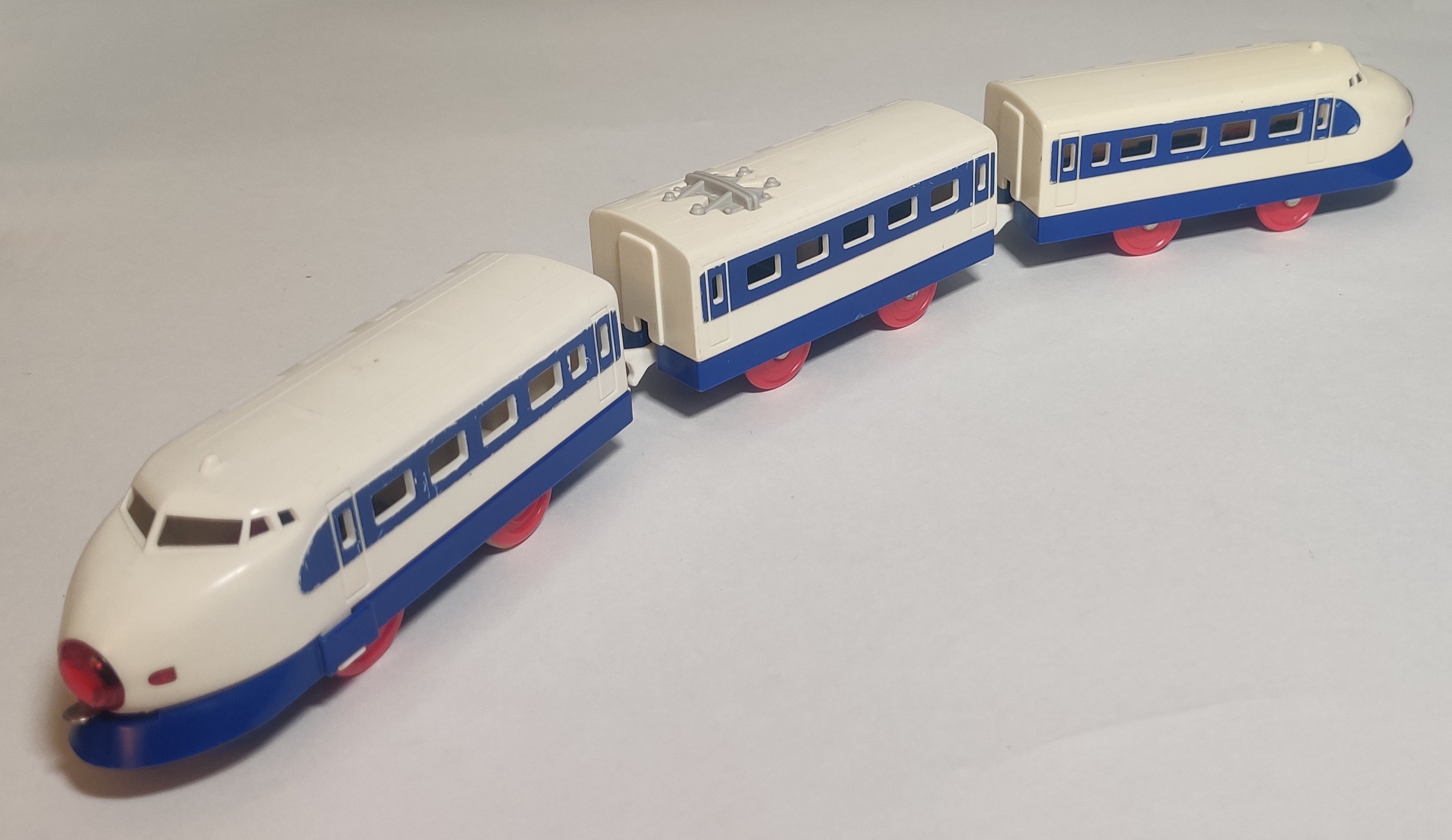
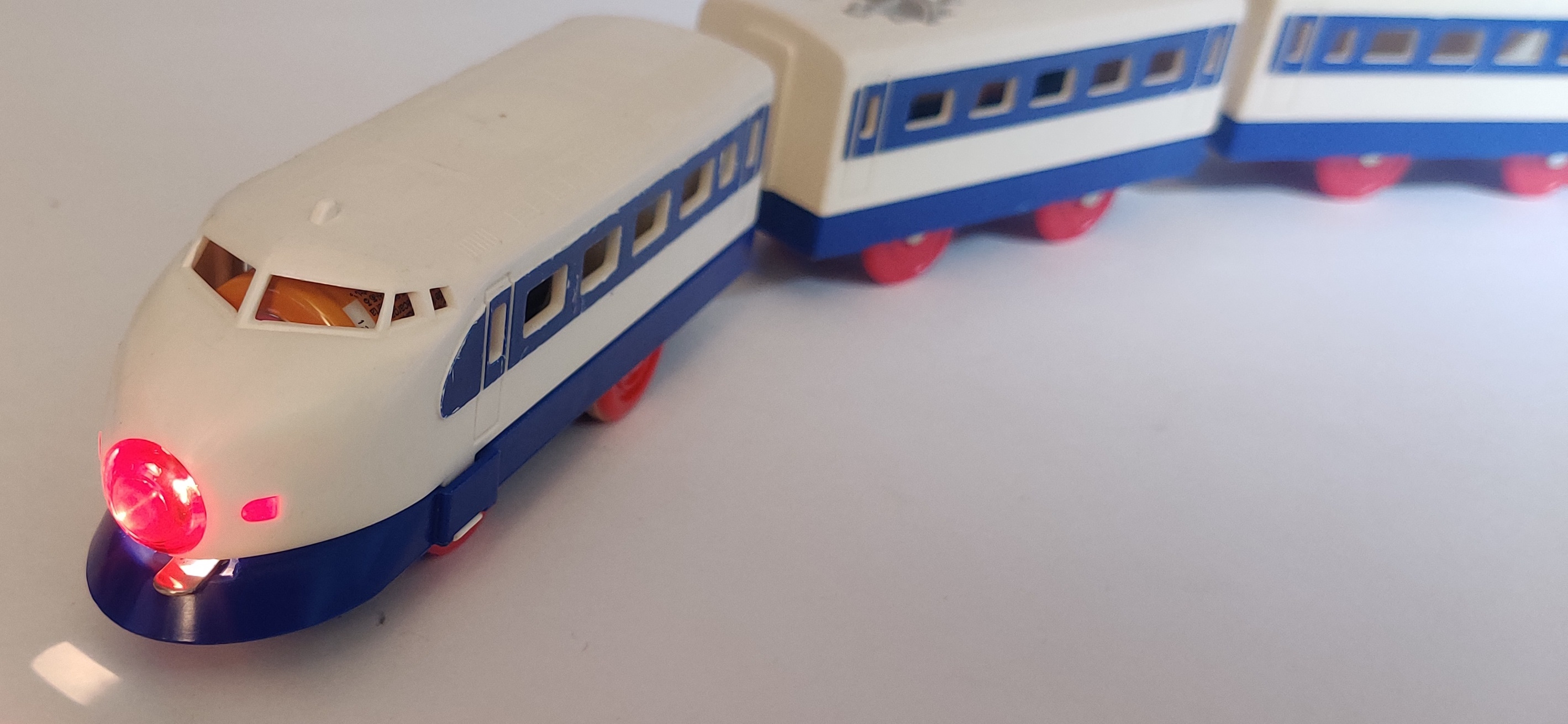
At least as early as 1983 the Hikari with Light was redesigned to use a bulb mounted to the lower chassis like the 200 series Tohoku Joetsu Shinkansen with Light. Externally, these trains look essentially identical to the 1979-early 1980s Hikari with Lights.
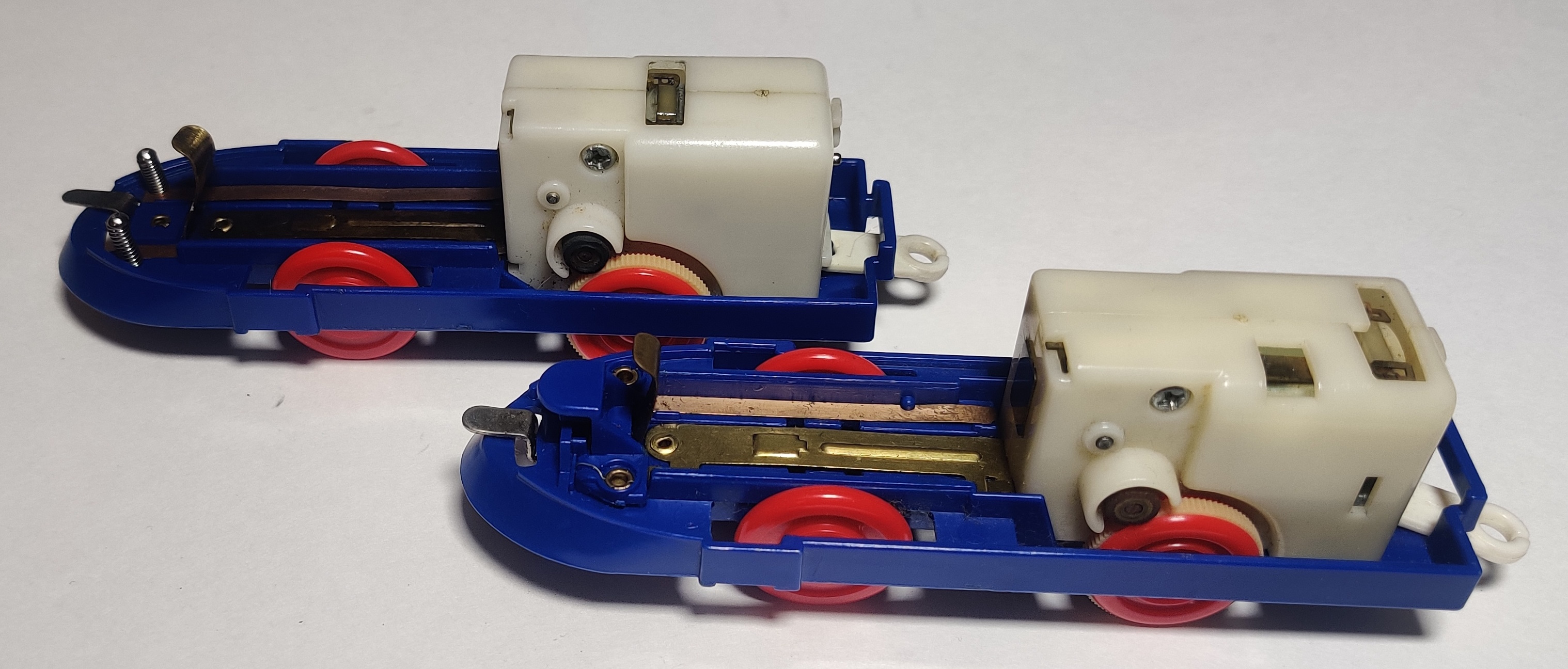
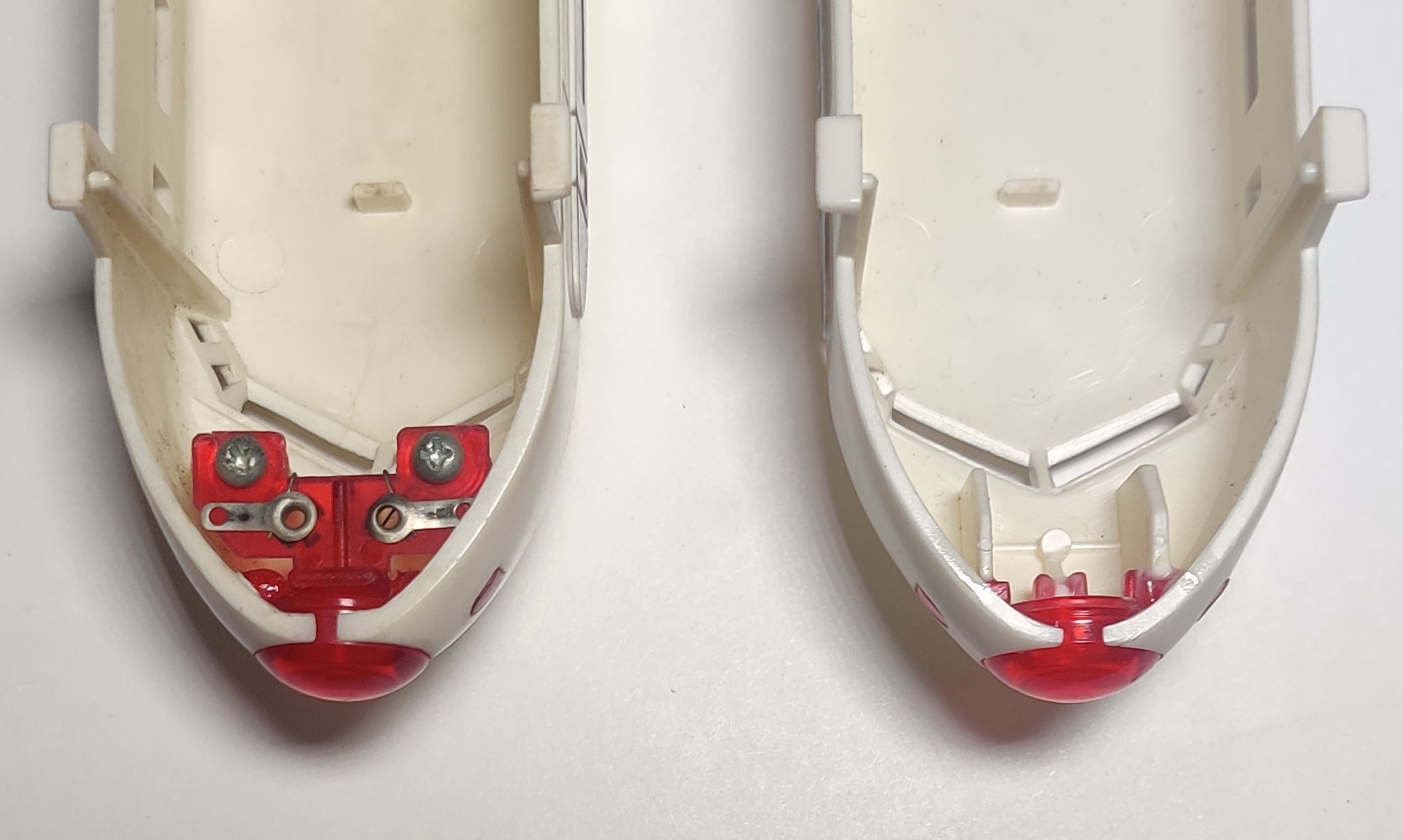

Instead of the old friction-fit contact strip these Hikaris use the newer white plastic gearbox with the motor contact at the rear instead of towards the middle. The spring-loaded pins have been replaced by a rivet system that connects the leads of the bulb in the tip to the contacts. The nose cone is now a simple red lens like older Hikaris instead of containing the bulb itself. I have found two mid 1980s Hikari with Lights from after the introduction of the Radio Control Hikari. The tooling for the intermediate car chassis gained cutouts for the radio receiver module to clip into and small clips were added to the tail car chassis to hold an antennae wire. These radio control series toolings were used on later examples of many trains that were converted for radio control in the mid 1980s.
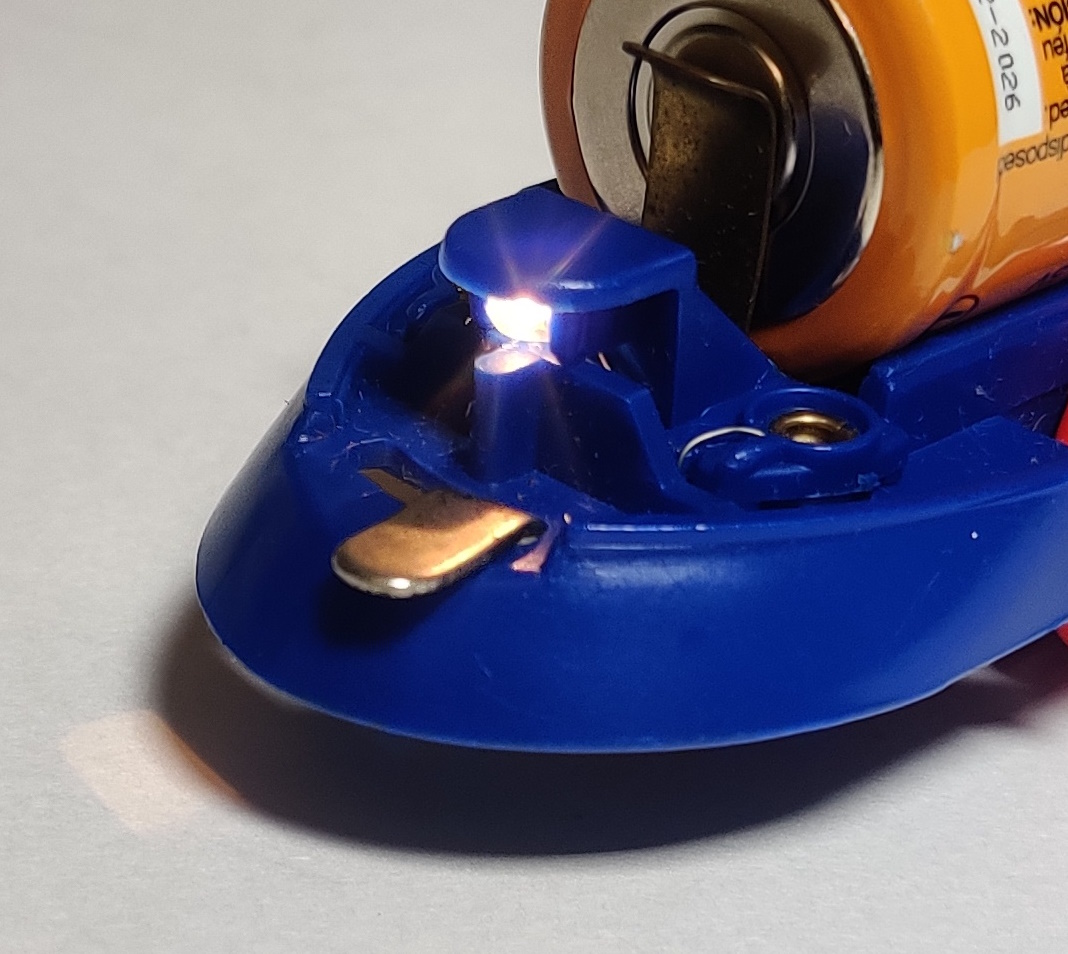
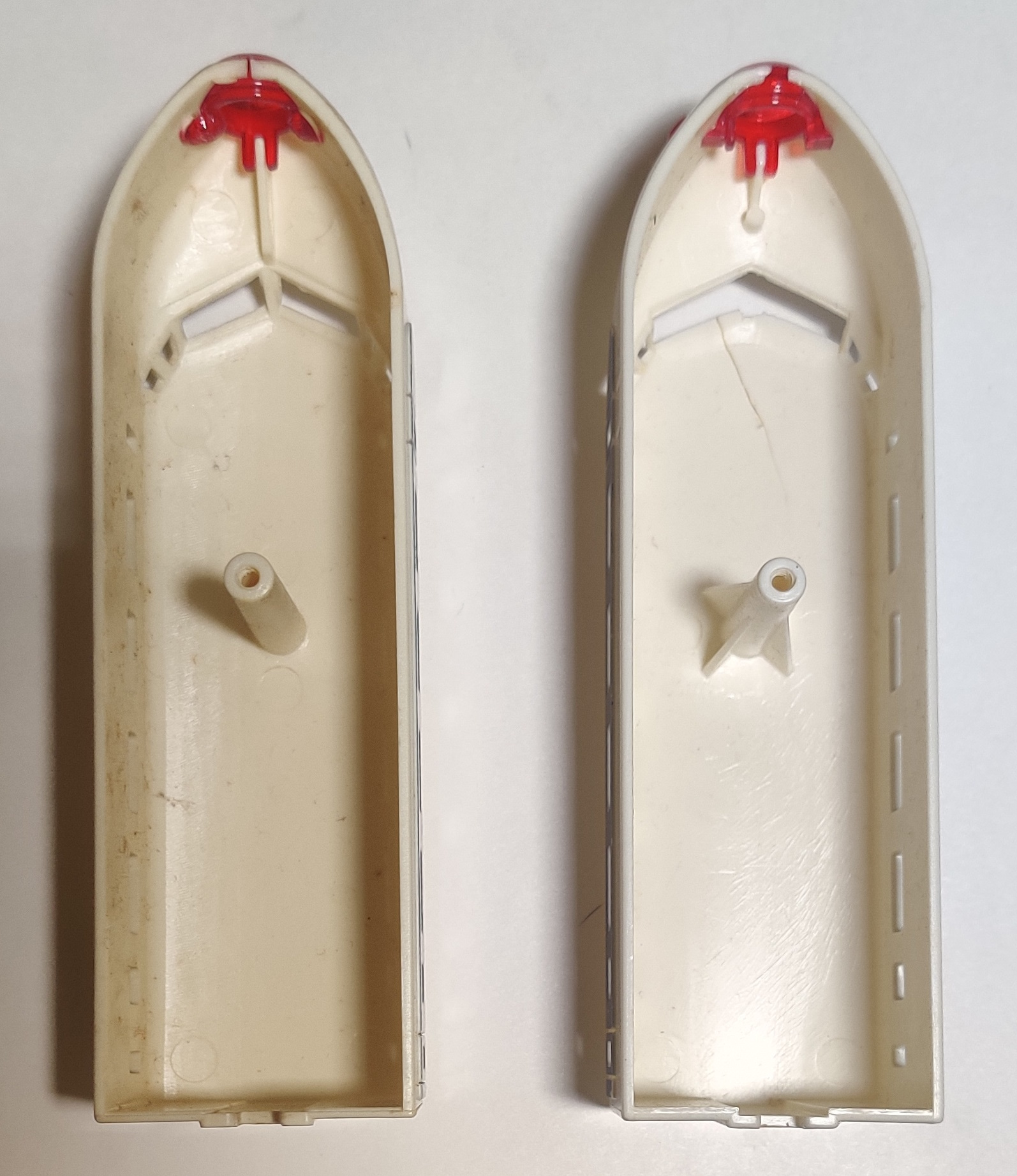
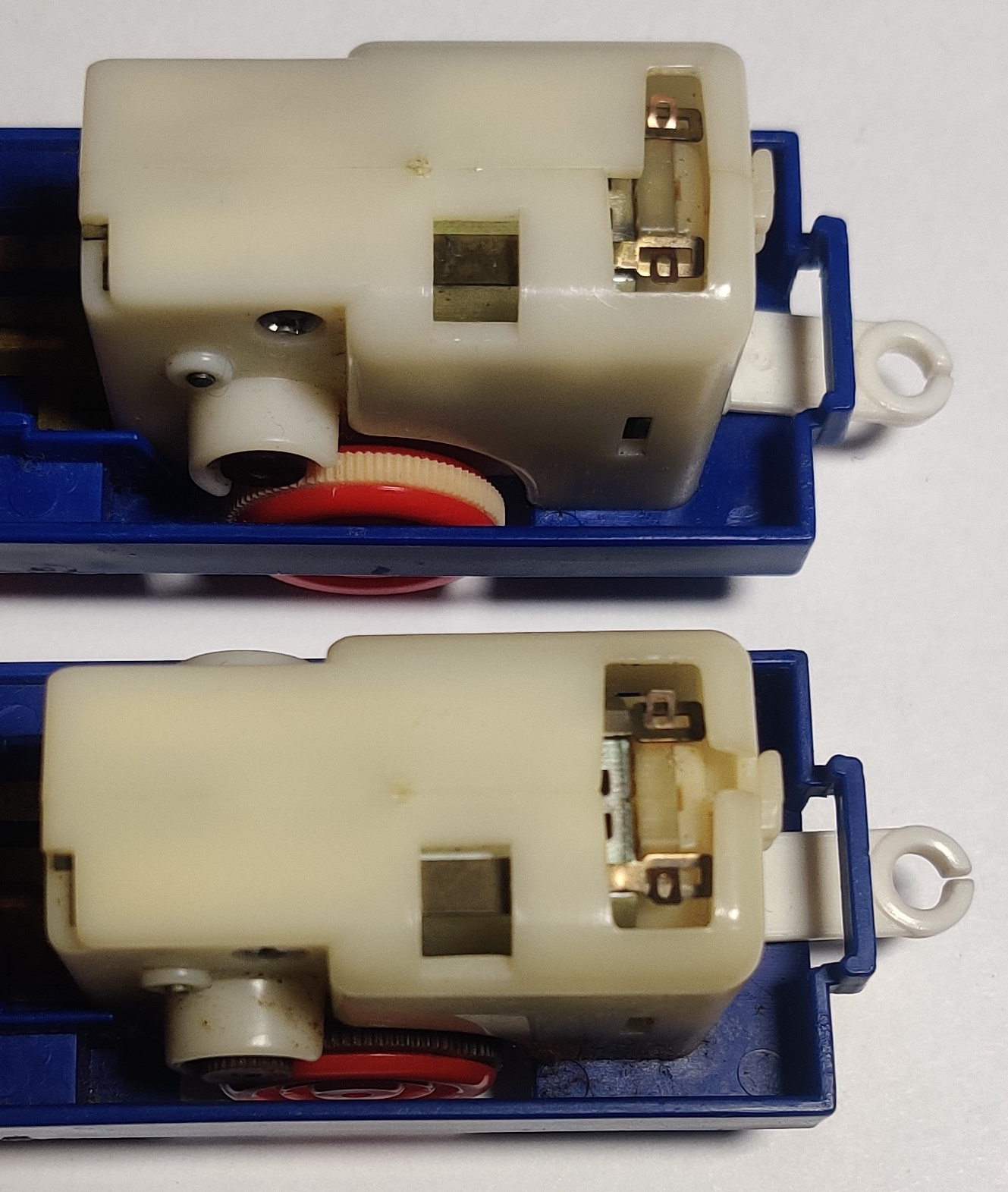
The bulb mounting at the front of the chassis resembles the 200 series molding feature. Other differences from the earlier 1980s Hikaris include more support around the car shell screw posts. As time went on, the rear-contact gearbox tooling was also changed subtly a few times, and it can be found with a few variations.
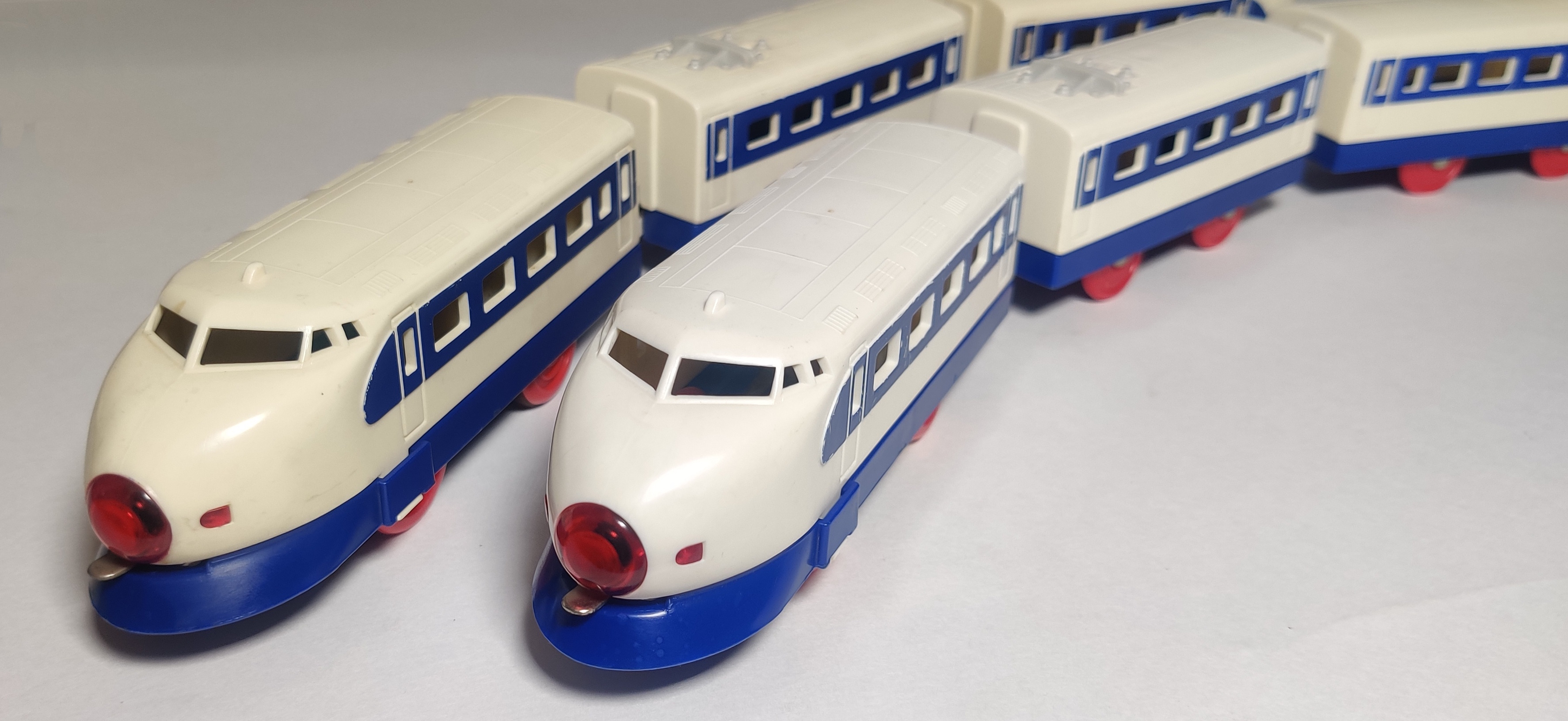
The reunified style of 0 and 200 series chassis bulb-mounting became the basis for the New Shinkansen with light, the new power 0 and 200 series trains with and without lights, the 922-series Doctor Yellow with light, and other 0-series based trains before an updated chassis began to be used on new 0 series trains in the 2000s.

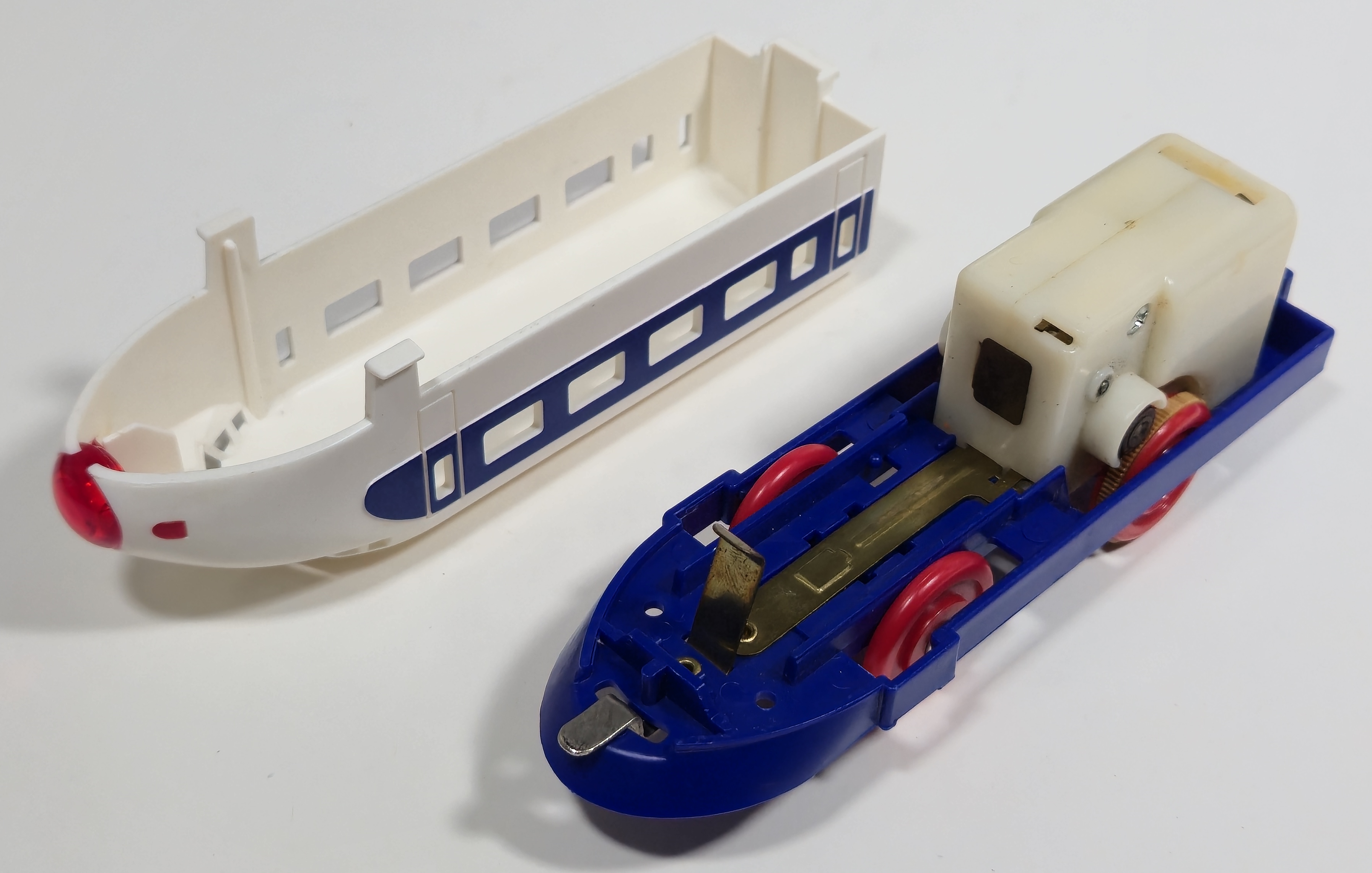
The bulb position change happened at least as early as 1983 or possibly even 1982, as I have found the unlit version of the two-car old power Hikari with updated chassis tooling in a 1983 production copy of the 1982 Beginner's Set Hikari. Unlike the later unlit Shinkansens based on the Hikari with Light tooling, the upper plastic piece is not installed. I am not sure if the original 1982 copies had the updated chassis or if they used a version of the spring-contact chassis.
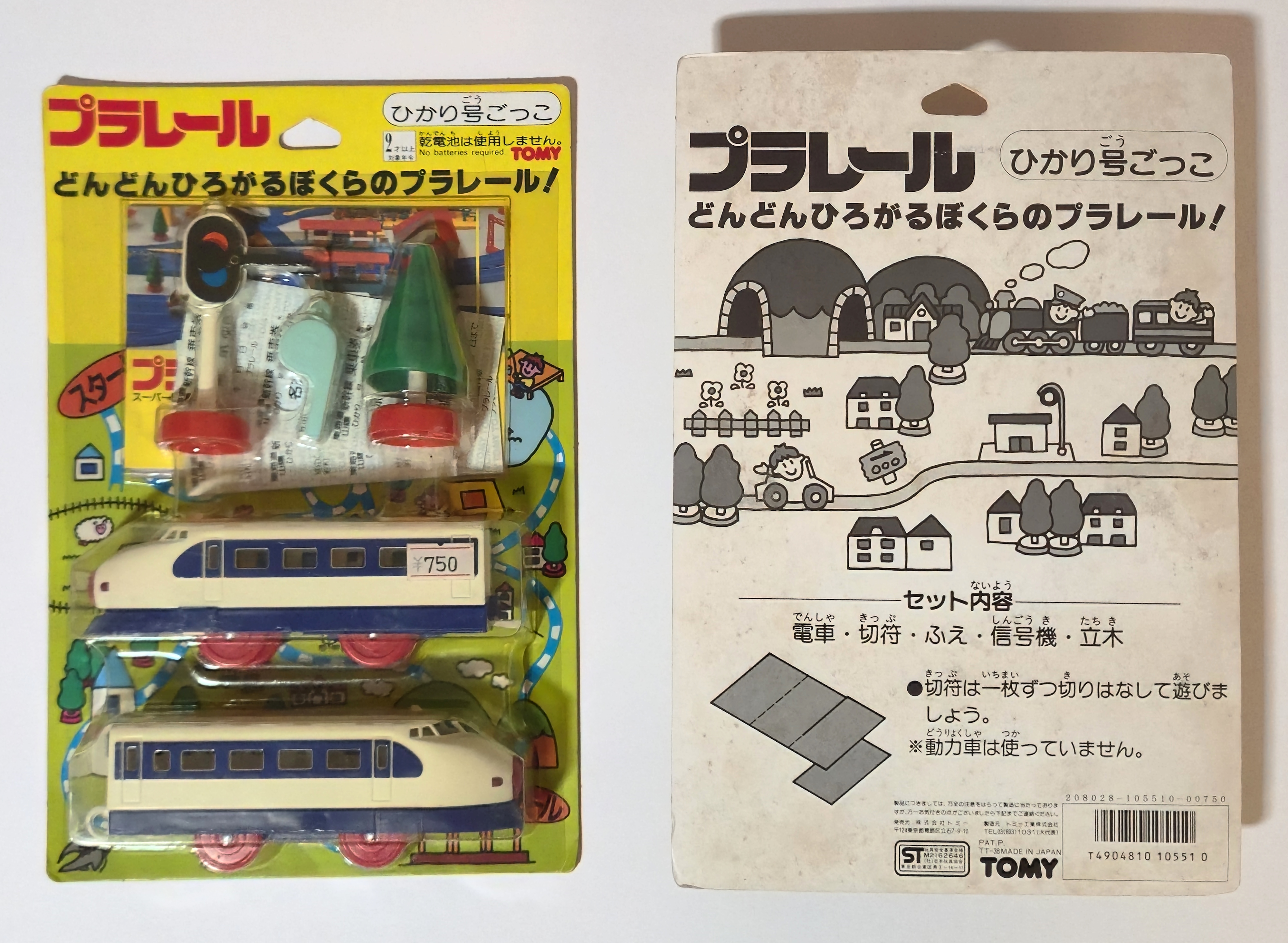
In 1987 the old power Hikari tooling was released in a two-car train with accessories as the Play Hikari-Go. These trains have no gearbox or metal battery contacts, and the body shell of the power car seems to be glued in place.
Hikari with Light (new power) (1987)

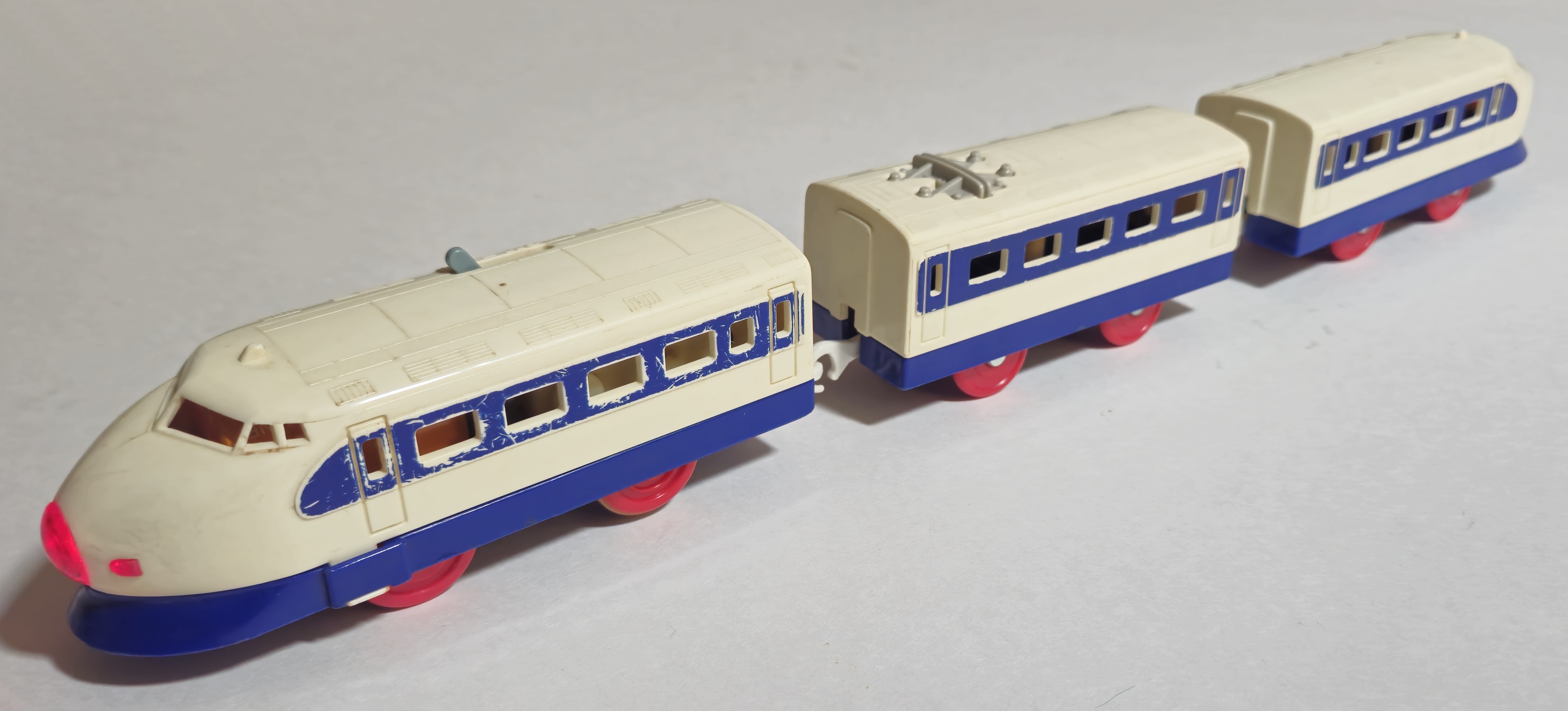
In 1987 Plarail tractive power transitioned to the so-called new power gearbox, delivering direct-drive power to the power car's rear wheels. Like many old power trans, the Hikari with Light saw only minimal external changes in the move to new power, primarily the relocation of the power switch to the roof of the power car.


These trains are still based on the radio control Hikari tooling.
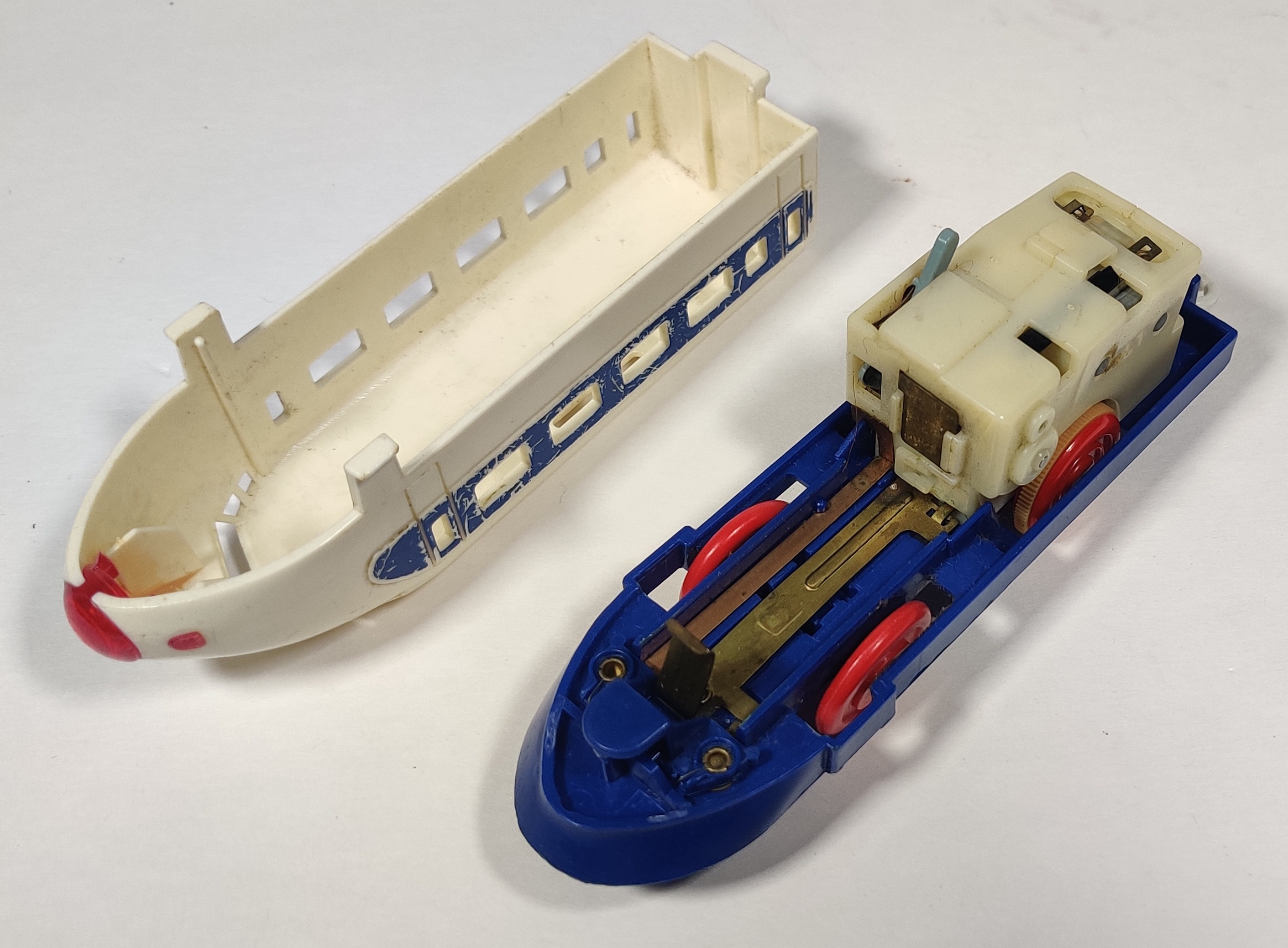
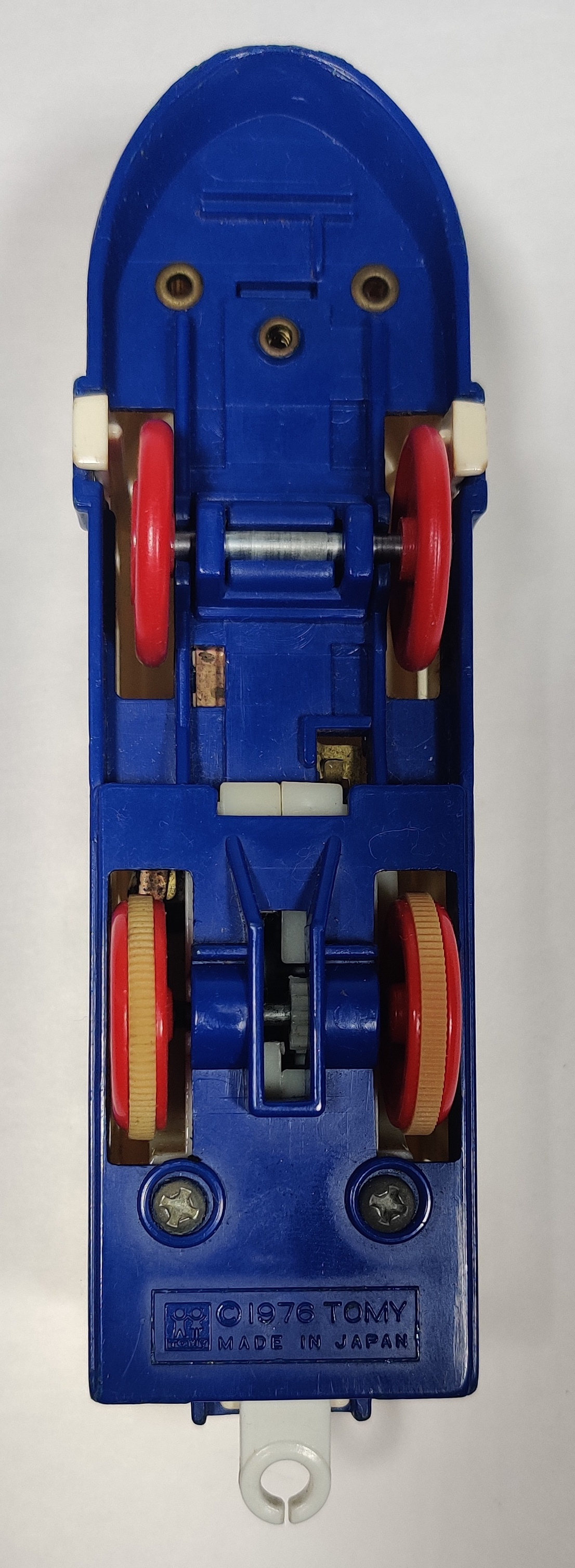
Japan-produced trains use the early single-speed gearbox with light blue power switch and still have brass battery contacts. The chassis of these early new power power cars still harken back to the 1970s Hikari toolings...

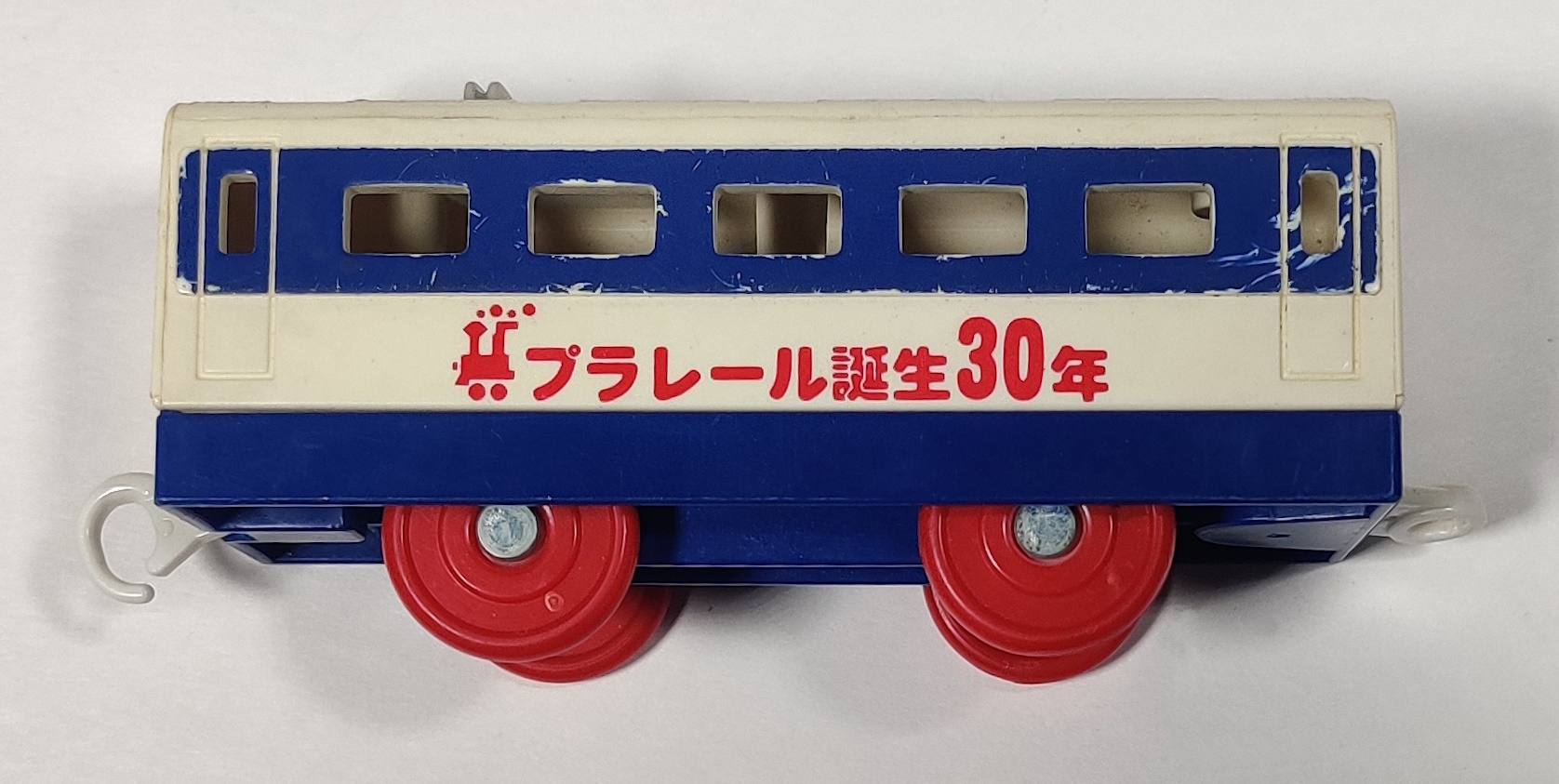
Produced in 1987 and sold in 1988, a special 30th Anniversary of Plarail (プラレール誕生30年) car was included in the Hikari with Light New Overpass Set for the 30th year of Plarail production in 1988. A similar car was made for the Tohoku Joetsu Shinkansen with Light.
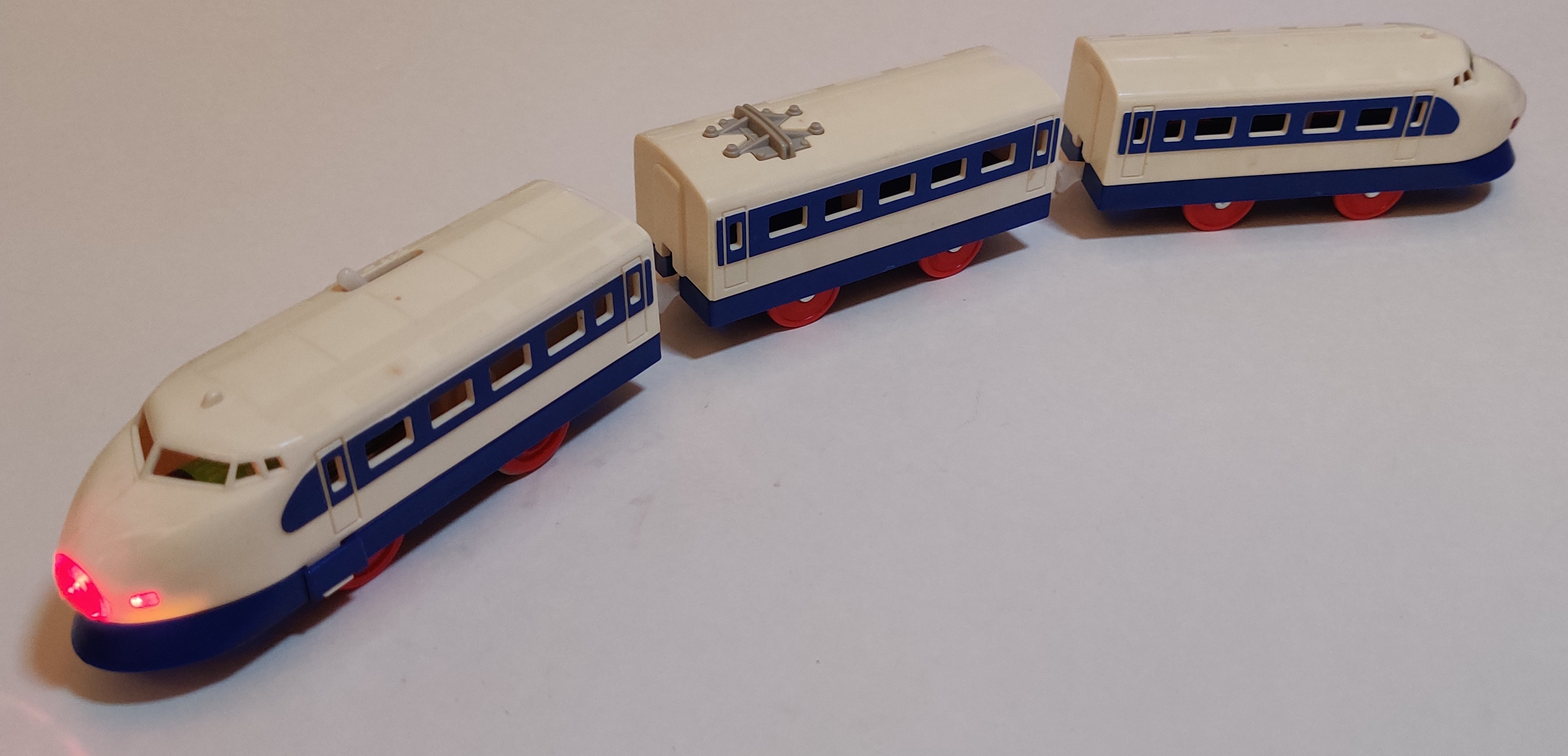
In 1989 production of 0 and 200 series trains moved to Thailand, the first year that Plarail was produced in Tomy's Thailand factory that opened in 1987.
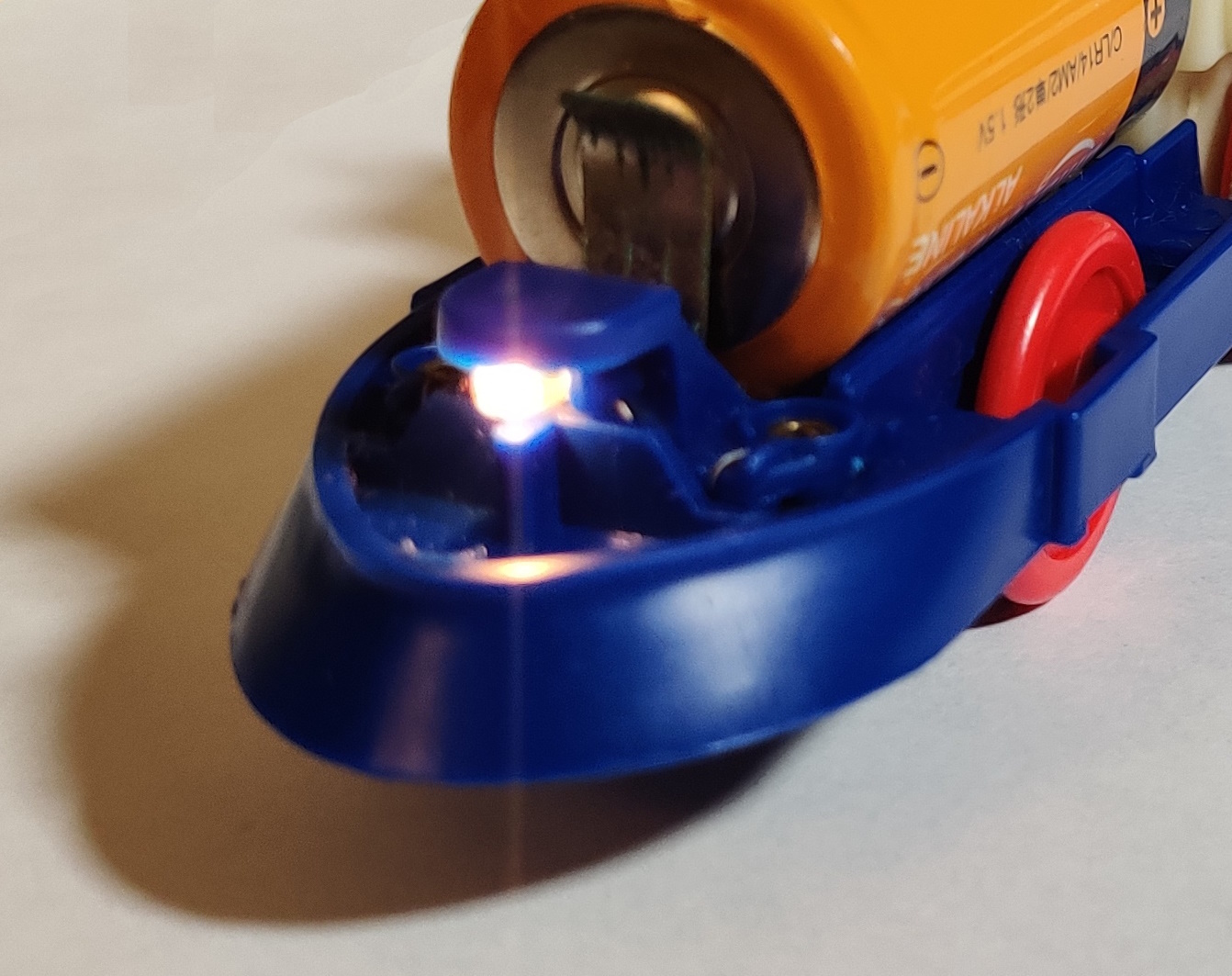
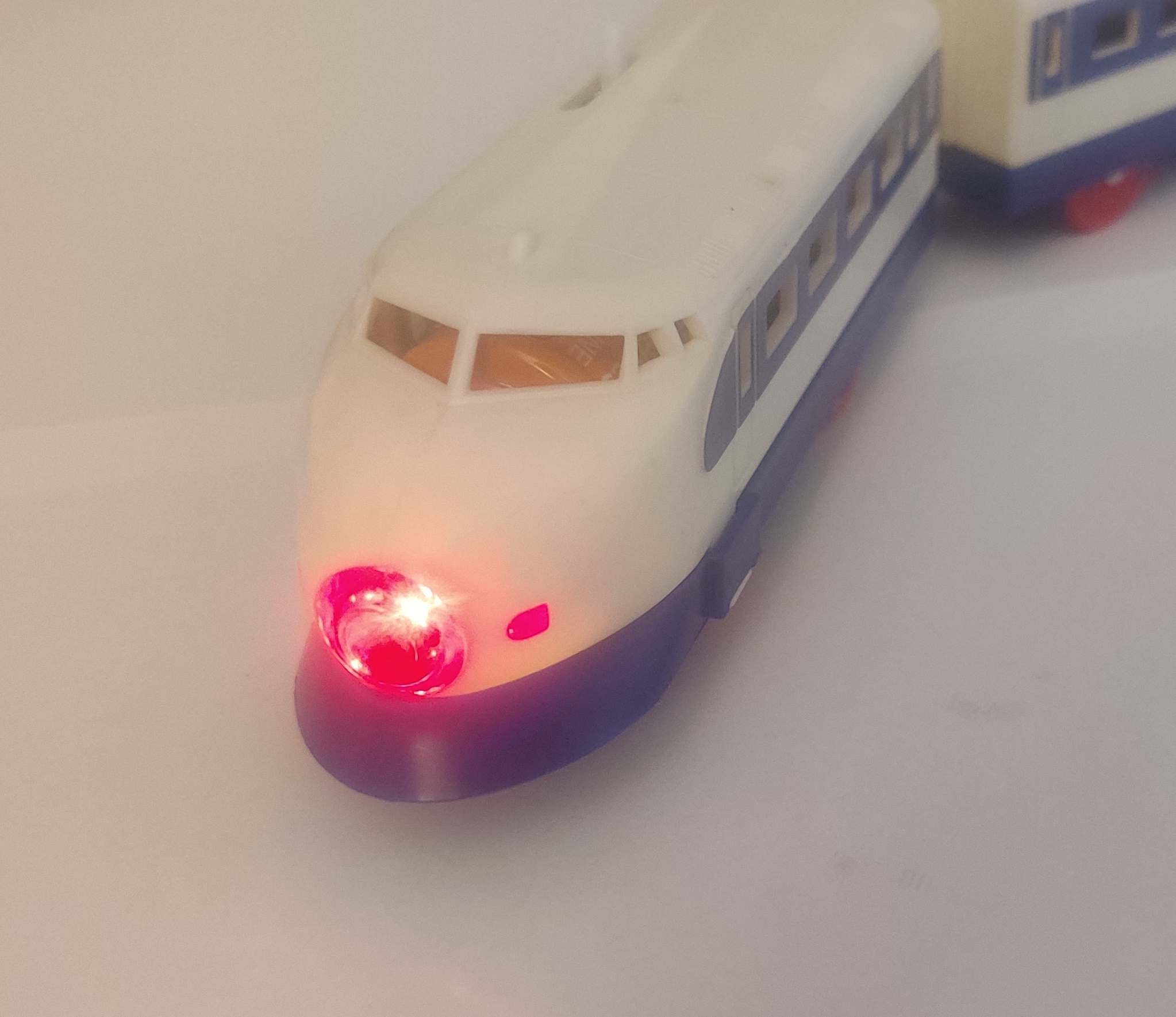
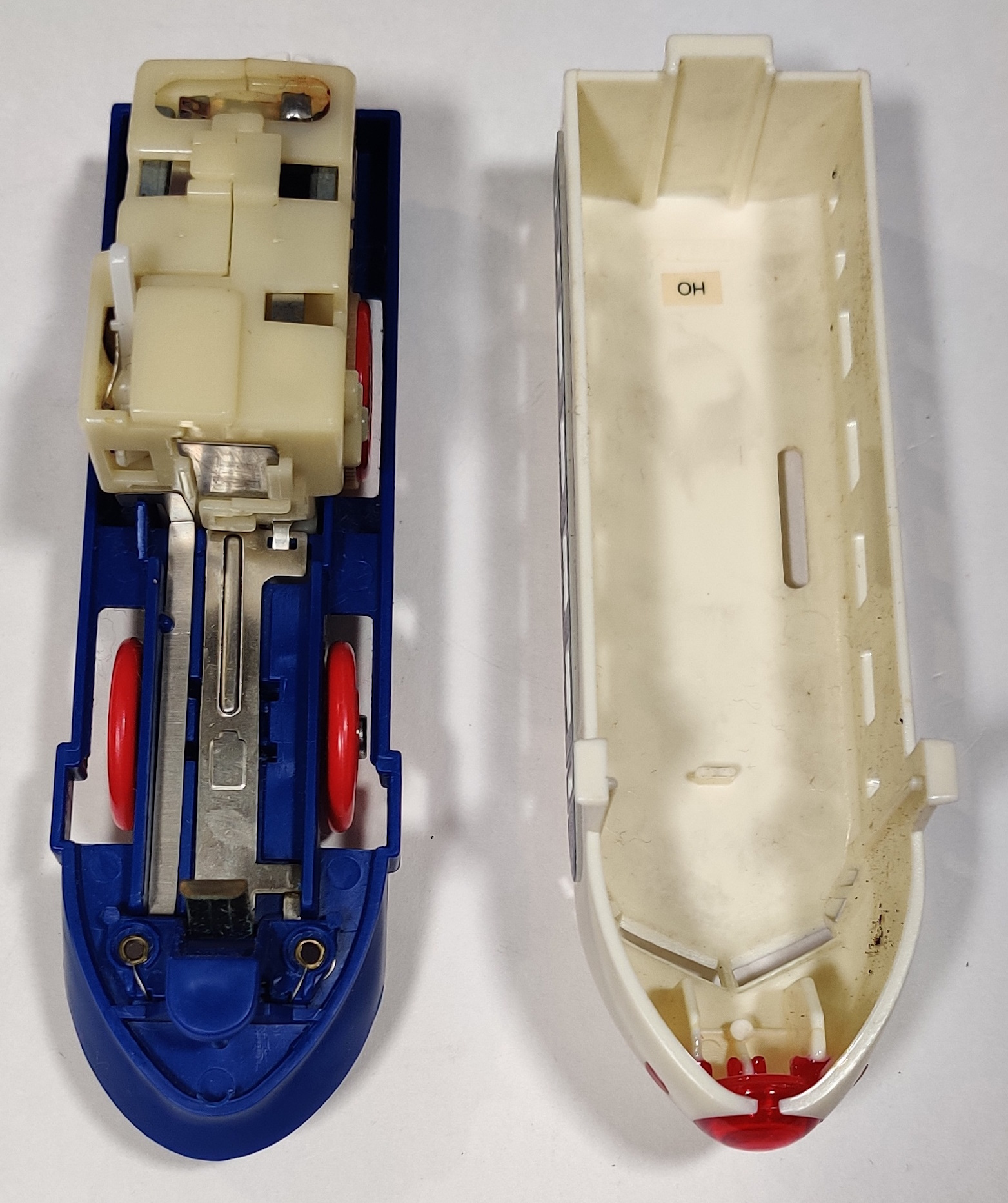
The new power Hikari with Light uses the original single-speed new power gearbox and a similar rivet and plastic molding configuration as the old Hikari with Light to hold and power the small bulb at the front of the chassis. A second metal strip, now all plated and silvery, runs up the length of the chassis to connect the positive side of the battery through the switch to the bulb. The light effect is very nice through the nose of the Shinkansen.


The Thailand-made intermediate and tail cars still have remnants from the old Radio Control Hikari.
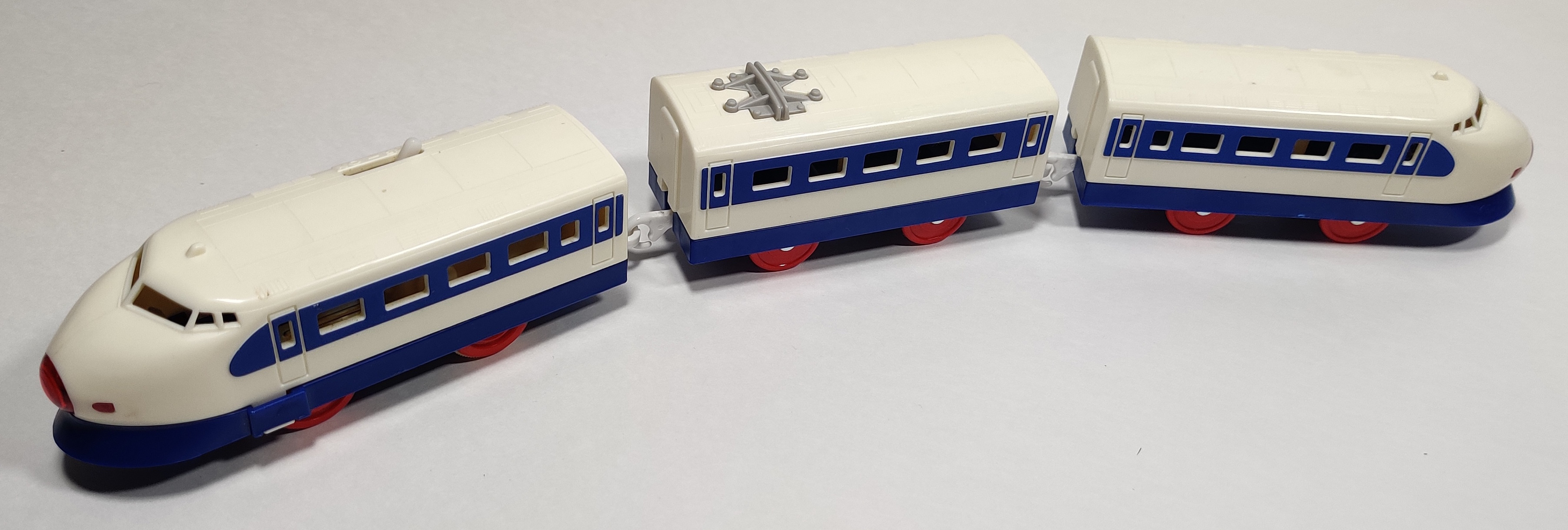
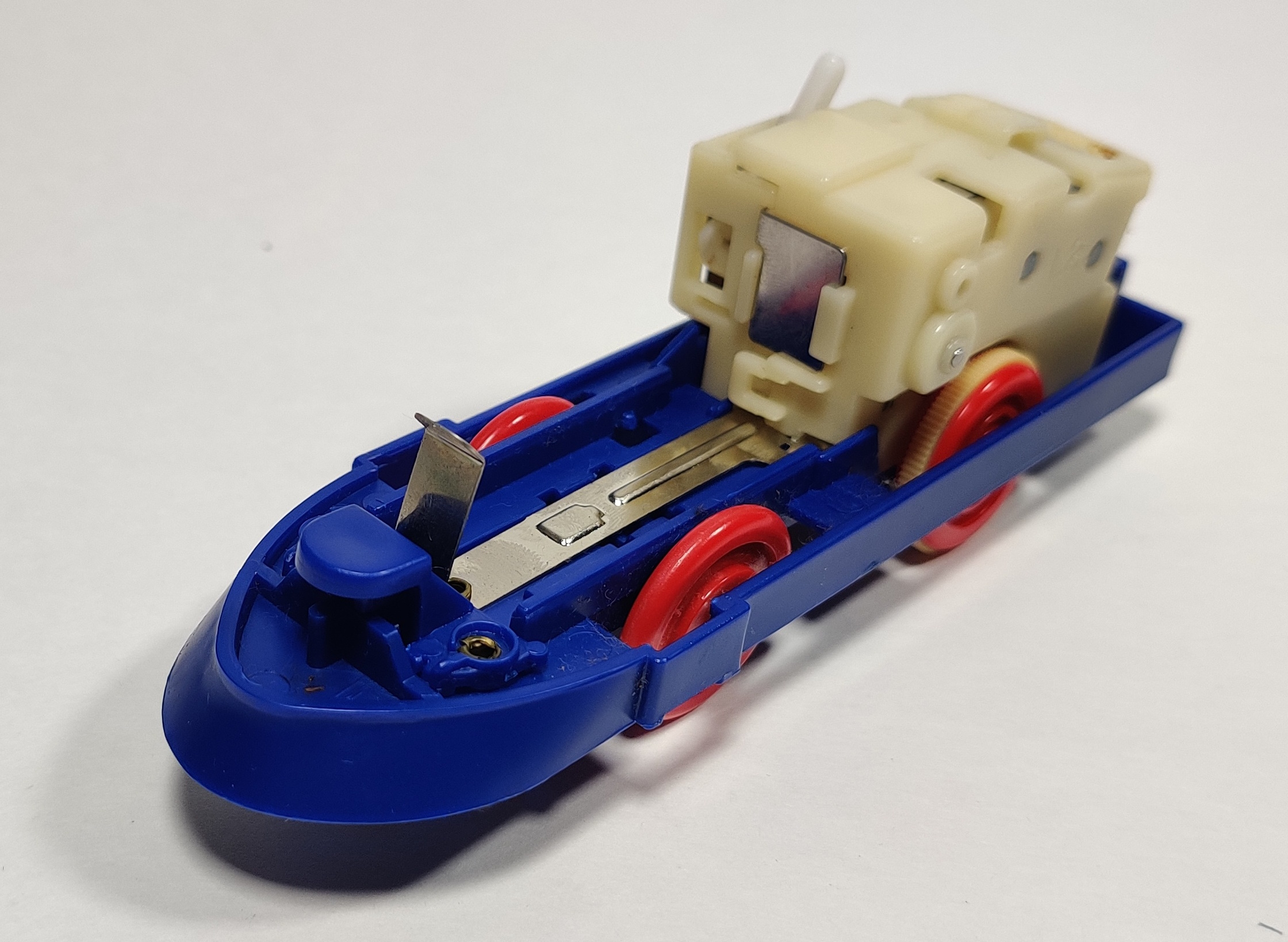
Unlit versions of the new-power 0-series were included in some sets like 1989's First Set and include the molding features and rivets of the light but not the bulb or the additional metal strip running back up the chassis.
Hikari with Light (seventh generation box) (1994)
In 1994 alongside the rest of the range the Hikari with Light transitioned to the new seventh generation style of boxes. These are later Thailand-produced 0-series trains that are pretty much identical to the earlier 1990s Hikari with Lights.
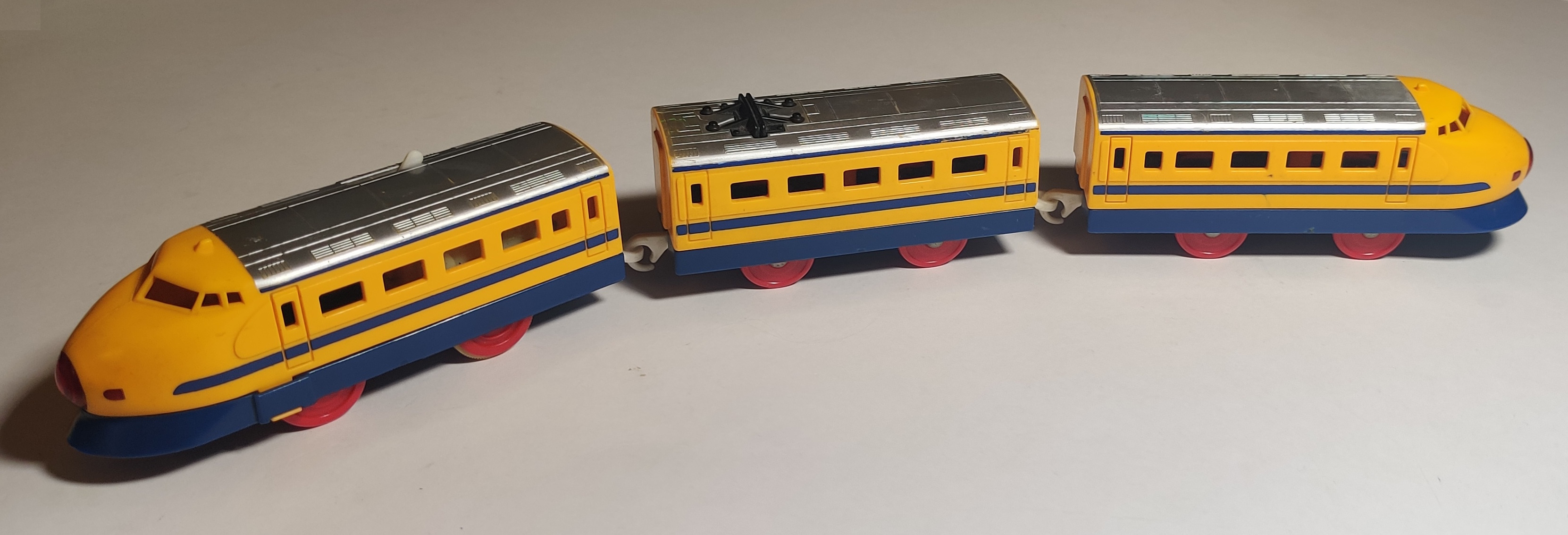

The new power 0 series molding was also the basis for the first Doctor Yellow as well as other designs of the 0 series such as the Electric Super Express Hikari throwback release from 1999. Sold briefly starting in very late 1998 was the more detailed West Hikari, reflecting the 0 series move to the westernly Sanyo section of the line and in 1999 the Plarail Fan Club Exclusive 40th Anniversary Album included a nice silver-roof 0 series Hikari with Light with a yellow nose cone. Most of these releases still included the light feature as well!
The Hikari with Light hardly changed its external appearance from its introduction in the late 1970s until it was retired in 1996. When the range was refreshed for the ninth generation of boxes in 2001 and 2002 there was no updated regular release 0 series Shinkansen. The "fresh green" color 0 series was released in the Shinkansen Kodama Set in 2002 and a cream and blue version of the 0 series Shinkansen was released as the Plarail Day train for 2003. In the summer of 2004 a "JR" logo 0 series was sold during a "Shinkansen Naru Discovery Day" event and then at Plarail Expos until receiving a fresh box in 2009 and then disappearing from the expo lineup. In 2008 to commemorate the retirement of the 0 series the Thank You Dream Super Express Shinkansen Hikari Set included a five car long 0 series in classic white and blue colors which is possibly the nicest 0 series Plarail Tomy ever made (or probably ever will make). Shortly after the 0 series retired, a six car fresh green "exhibition" set was released. In 2014, a new tooling depicting an early 0 series with large windows and a lit nose like the classic Hikari with Light was released in a set celebrating the 100th anniversary of Tokyo Station. This tooling was used for a few other releases including the 2024 Shinkansen 60th Anniversary Commemoration 0 Series Shinkansen Hikari 1 & Super Express Hikari Set, although the trains lack the light feature.